CLEAR WATER
CHEMICAL TANKERS BENEFIT FROM A MORE BALANCED MARKET
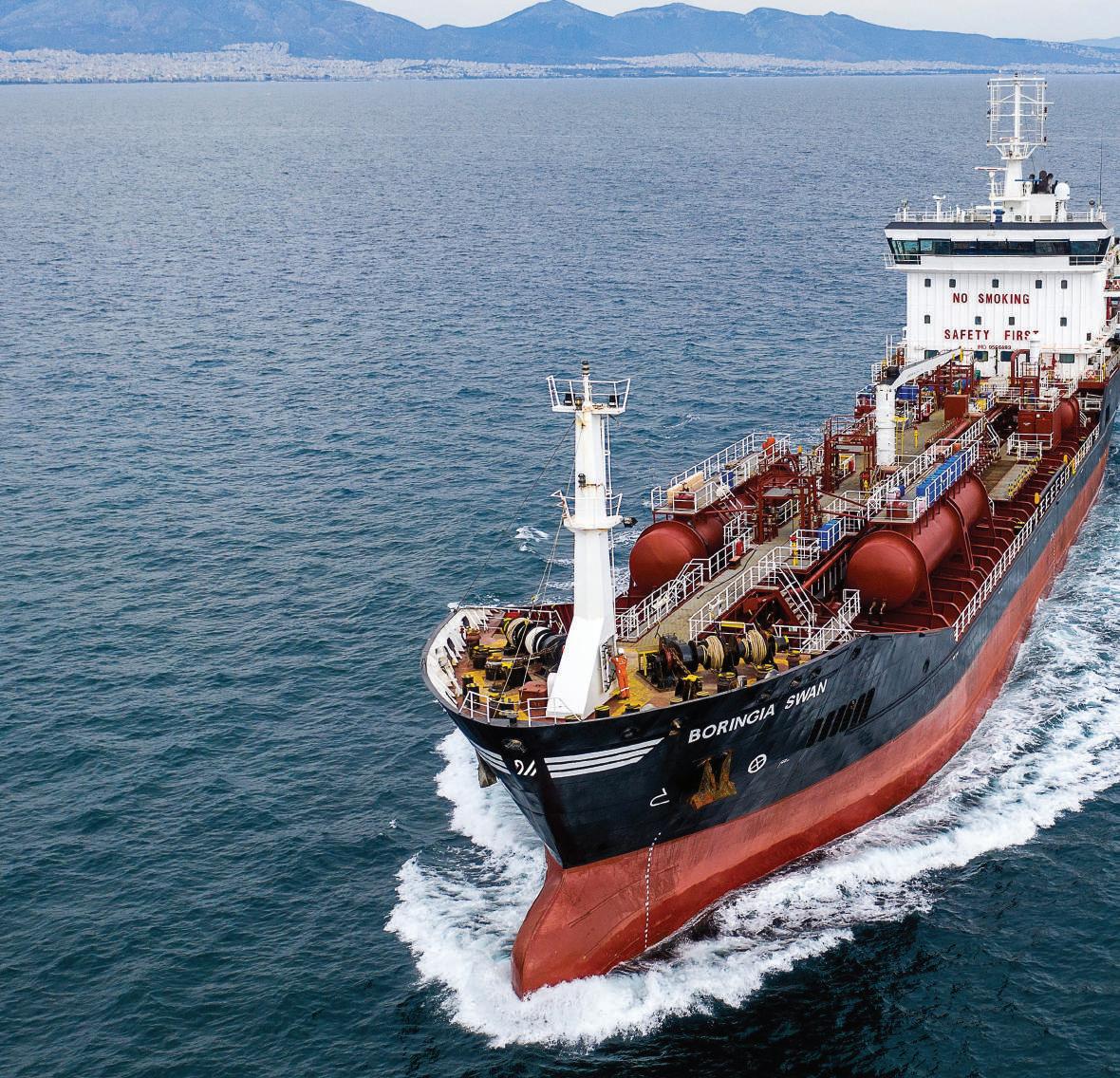
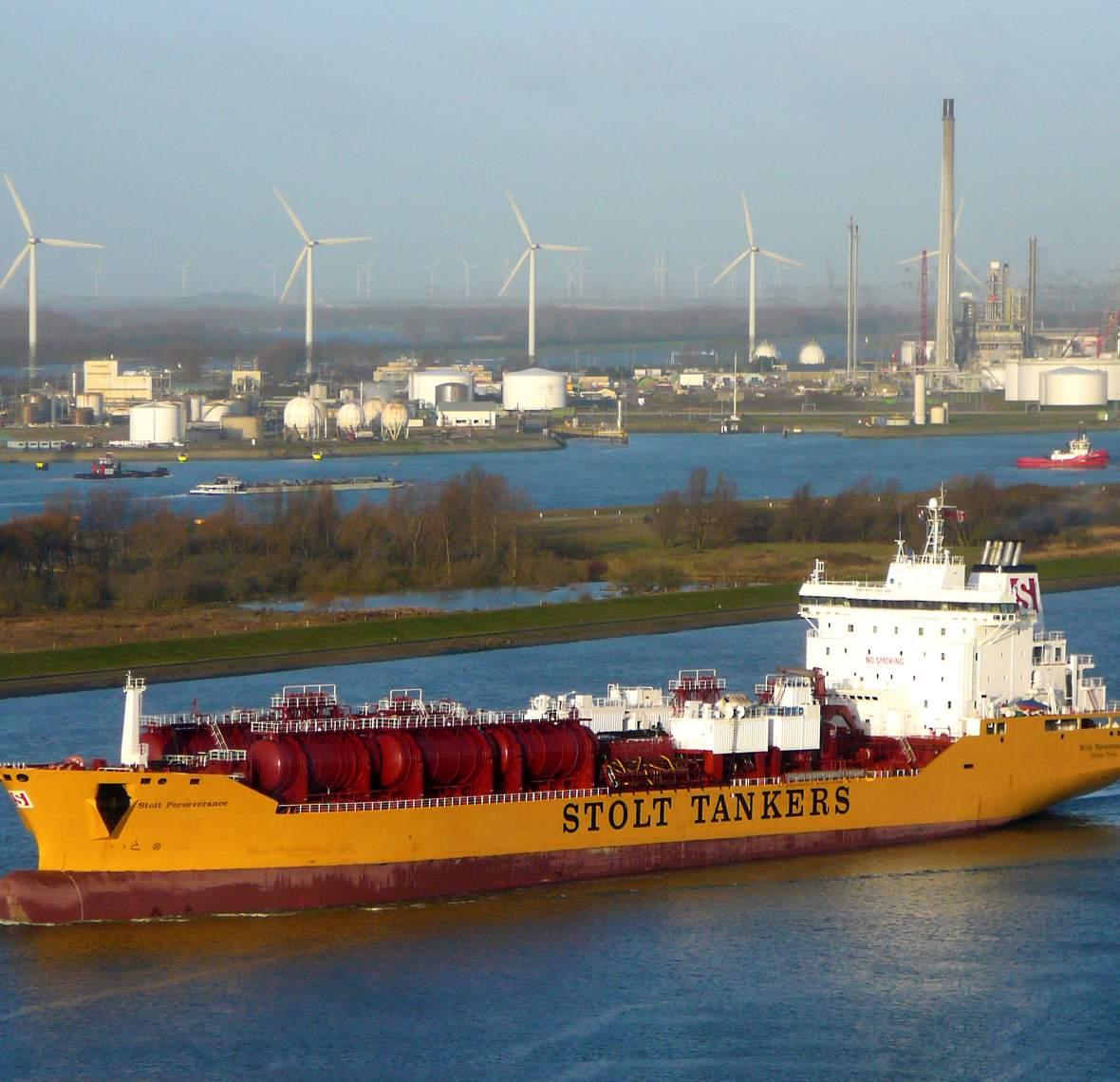
UN EXPERTS REACH THE END
MORE INTEREST IN NEW ENERGIES
YOUNGER GENERATION TAKES OVER
MONTHLY
THE INFORMATION SOURCE FOR THE INTERNATIONAL DANGEROUS GOODS PROFESSIONAL SINCE 1980
FEBRUARY 2023
you can depend on the customary high quality and safety you expect from SCHÜTZ: our GREEN LAYER ECOBULK and PE drums are optionally tested and approved for use in the hazardous goods sector.
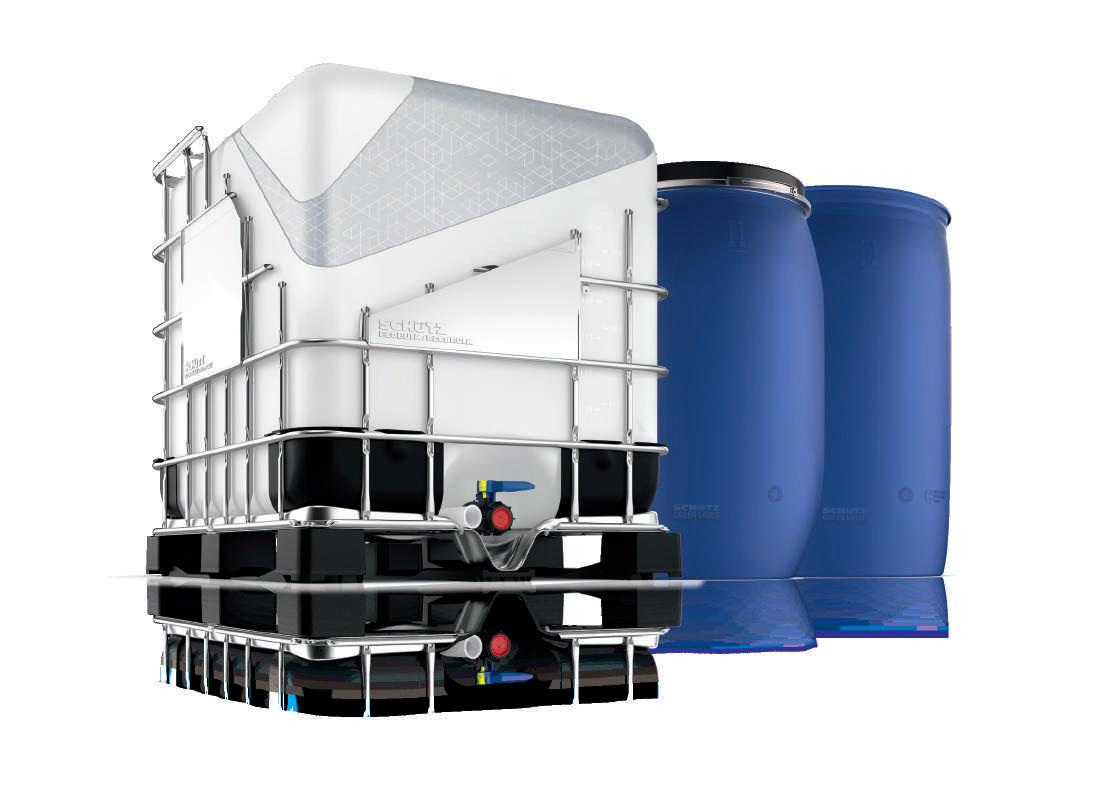

Find out more at www.schuetz-packaging.net Phone +49 2626 77 0
CONSERVATION –MAXIMUM
4 –BOOTH D22 | NEWSCHÜTZRECYCLATE MATERIAL NEW MATERIAL
info1@schuetz.net www.schuetz.net WITH OPTIONAL UN APPROVAL RESOURCE
TESTED SAFETY
EDITOR’S LETTER
The numbers are not yet finalised – though we expect them to start trickling in any time now – but it is already clear that there were plenty of global logistics operators who did very nicely, thank you, out of 2022. In particular, some of the major liner operators raked in hundreds (if not thousands) of millions of dollars in extra profit, though not without raising the ire of shippers who often felt they had been fleeced on freight charges and demurrage costs.
A large chunk of those profits have been handed back to shareholders (and, in a few instances, to employees too) and more has been put to buying up other links in the chain, as we have noted before.
The tank container sector also enjoyed a banner year and, while ITCO is still compiling its annual fleet survey, it is evident that tank manufacturing numbers were higher than ever to meet a surge in demand that followed on from changing trade patterns. Tank operators found their customers were asking for more inventory as a bulwark against persistent supply chain disruption, holding onto tanks and delivering more demurrage revenue, while slow steaming by vessel operators provided more days of employment on each long-haul leg.
That additional demand for new tanks translated directly into added demand for tank equipment and, as Fort Vale’s Graham Blanchard reports in this issue (see page 16), equipment suppliers have been investing in new manufacturing capacity of their own. Interestingly, while consumers around the developed world have taken to online shopping in increasing numbers during the Covid years, it seems that industrial buyers are taking the same route, with
Fort Vale noting that its new webshops have generated a lot of sales.
There is a sense, as Blanchard says, that things are now beginning to get back to something close to ‘normal’; the pandemic is - broadly speaking – under control, energy prices have come off their highs, and markets are being subjected to less panic. That should make planning easier, all the way along the supply chain (barring another ship grounding in the Suez Canal or an escalation of the war in Ukraine).
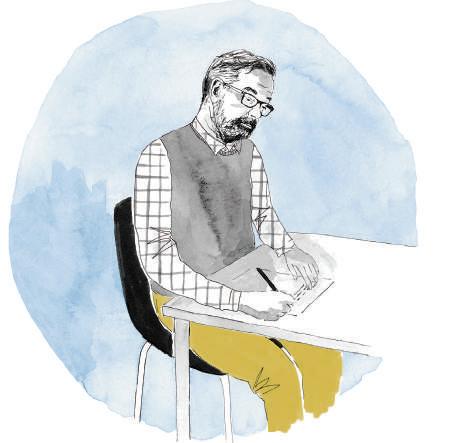
What, though, of those shippers who remain aggrieved by the costs they were forced to pay to get their products to market during the freight rate boom? There had been some talk of getting away from the old style of aggressive contract negotiations towards a more balanced and longterm approach, which certainly suits the carriers; but will shippers be willing to forgive and forget the problems and costs they had to deal with, while their carrier partners sat back and counted the cash rolling in? We may have a brief opportunity to see how things are going to play out: there is every indication that global trade volumes this year will be weaker.
If Graham Blanchard is right, and we are heading back to normal, perhaps 2023 will be the year that shippers take back control of the freight market. It would be nice to think that the past three years have shown them the value of logistics and they shippers be prepared to pay a decent price for it, but perhaps the carriers have overplayed their hand. It is going to be something of a battle, I think.
Peter Mackay
UP FRONT 01 WWW.HCBLIVE.COM
SAVE TIME. SAVE MONEY.
When clients mentioned that their tanker fleets in the Southern Hemisphere were travelling long distances to deliver fuel, but were frequently unable to refill their tanks for the return journey because of the danger of chemical corrosion, we believed we could develop a solution to the problem.
As a result, Fort Vale have launched a 4” Stainless Steel API Adaptor to allow for flexible product loading and increased corrosion resistance. The adaptor, suitable for use with a 4” API coupler, used for bottom loading and unloading, provides a quick action, liquid tight mechanical connection for transportation tanks and provides liquid tightness when closed.

Ideally suited for safe chemical transfer between transport and static tanks and designed with an MAWP of 5 Bar and a temperature range of -20 deg C to 70 deg C.
Designed to conform with BS EN 13083:2008+A1:2013 & BS EN 14432:2014
Not every company can do this. Not every company is Fort Vale.
® FORT VALE. FOLLOW THE LEADER. Visit us at www.fortvale.com
Managing Editor
Peter Mackay, dgsa
Email: peter.mackay@chemicalwatch.com
Tel: +44 (0) 7769 685 085
Advertising sales
Sarah Smith
Email: sarah.smith@chemicalwatch.com
Tel: +44 (0) 203 603 2113
Publishing Manager
Sarah Thompson
Email: sarah.thompson@chemicalwatch.com
Tel: +44 (0) 20 3603 2103
Publishing Assistant
Francesca Cotton Designer
Petya Grozeva
Chief Operating Officer
Stuart Foxon
Chief Commercial Officer
Richard Butterworth
CW Research Ltd
Talbot House Market Street Shrewsbury SY1 1LG
ISSN 2059-5735 www.hcblive.com
UP FRONT 03 WWW.HCBLIVE.COM CONTENTS VOLUME 44 • NUMBER 02 SAFETY Incident Log 34 Chemicals on ice EMSA renews MAR-ICE project 36 Getting better ITOPF data shows oil spill improvement 37 REGULATIONS Race to the line UN completes 23rd revision 38 Battery basics IATA updates lithium guidance 49 Final reminder PHMSA tweaks HMR 50 BACK PAGE Not otherwise specified 52 NEXT MONTH What’s new in tank terminal equipment Building intermodal networks Gas tanker markets Chemical distribution in Europe UP FRONT Letter from the Editor 01 30 Years Ago 04 Learning by Training 05 STANKER SHIPPING The results are in Strong market for chemships 07 Only connect Marlink plugs in Uni-Tankers 10 Tugging along Amogy trials ammonia for barge power 11 News bulletin – tanker shipping 12 TANKS & LOGISTICS The middle way Leschaco plans Moerdijk site 14 Cautiously optimistic Fort Vale hopes for a boring year 16 Power of three Klinge keeps it in the family 18 Speak my language ECTA expands digital guidance 20 News bulletin – tanks and logistics 22 INDUSTRIAL PACKAGING Going for growth Schütz adds to production capacity 24 Ion brew Orbis adds to battery packaging 25 Get it together Air Sea digitalises closure instructions 26 News bulletin – industrial packaging 27 NEW ENERGIES Emirates to Amsterdam Masdar plans green fuel chain 28 Uncommon carrier Vopak, Hydrogenious plan LOHC chain 29 Bio-bonanza Varo invests in biogas 30 Grab and go MISC builds CCS community 31 COURSES & CONFERENCES Conference diary 33
Monthly is published by CW Research Ltd. While the information and articles in HCB are published in good faith and every effort is made to check accuracy, readers should verify facts and statements directly with official sources before acting upon them, as the publisher can accept no responsibility in this respect. ©2022 CW Research Ltd. All rights reserved
HCB
30 YEARS AGO
A LOOK BACK AT FEBRUARY 1993
THE MEETING ROOMS and hallways of the UN’s Palais des Nations in Geneva echo down the years with the discussions at the many, many meetings of experts in the transport of dangerous goods. Reading HJK’s latest summary of the joint RID/ADR experts’ autumn 1992 meeting in the February 1993 issue of HCB is like opening a window into a world that is still so familiar. Many of the debates held that week established a basis for discussions that continue to this day.
The September joint meeting included a quite radical revision of some of the provisions of RID and ADR, perhaps the most far-reaching being alignment with air and sea regulations in the upper flash point limit of 61°C, rather than 55°C, although RID and ADR were in those days still full of ‘marginals’ and the Class 8 provisions were still far from settled. It was to be a few more years before the two regulations were restructured into the form we know so well today. On the other hand, Germany had opened discussions on the possibility of using reinforced plastics for tank barrels.
Another important area of work at the time – and something that has really come into its own in recent years – was a “massive” revision of the provisions for infectious substances, which, HJK said at the time, would bring the Class 6.2 text “from the Middle Ages to the 20th century”, removing references to claws, hoofs and pigs’ bristles and introducing requirements for the transport of diagnostic specimens, micro-organisms, rickettsia and other new-fangled substances.
At the time, the experts felt it was an urgent matter to be dealt with, as the European Commission was also busying itself with the topic
and the one thing that the RID/ADR experts did not want was to be told what to do by Brussels bureaucrats with no knowledge of transport safety. Fortunately, they had the World Health Organisation on their side and the decisions made back then have helped the world cope with recent disease outbreaks and pandemics.
Elsewhere in the February 1993 issue, we reported on the expansion of the tank container concept, particularly in the Middle East, which had been identified as an important growth market for the coming decade. However, as Nigel Parkes wrote, there were challenges for those wanting a slice of that market – the long time needed to build commercial relationships with local parties, the reliance on road transport rather than rail, the demanding climate and, perhaps most importantly, the lack of cleaning and repair depots.

Hiroshi Takubo of NRS summarised the difficult position of tank containers in Japan, where the national regulations for domestic transport differed considerably from those in force elsewhere. While IMO approval of a tank container was taken as evidence of its suitability for the import or export of dangerous goods, the Japanese Fire Protection Regulations (which described a tank container, with its chassis and tractor unit, as a ‘transportable tank warehouse’) presented a labyrinthine and time-consuming challenge for domestic use.
Oddly, once a domestic tank container was delivered and removed from its chassis, it was no longer a transportable tank warehouse and fell into a regulatory gap that had to be covered by a temporary approval lasting no longer than 10 days.
04 HCB MONTHLY | FEBRUARY 2023
LEARNING BY TRAINING
by Arend van Campen
IS INFORMATION THE PRIMARY SUBSTANCE OF THE UNIVERSE?

INFORMATION IS A WORD that has never been easy to pin down. In its most familiar sense, information today is news, intelligence, facts and ideas that are needed and passed on as knowledge. But a more active and constructive meaning is something that gives a certain shape or character to matter, or to mind; a force that shapes behaviour, trains, instructs, inspires and guides. Information gives form to the formless, DNA codes are information and form human thought patterns. In this way, information spans the disparate fields of space computing, classical physics, molecular biology and human communication, the evolution of language and the evolution of man. Nature can no longer be seen as matter and energy, but must be interpreted as matter, energy and information. (Campbell, Jeremy, 1982)
The universe is a physical system that contains bits of information. Every elementary particle carries bits of information. Electrons carrying information interact in a systematic way to perform a quantum logic operation. A computer and our mobile phones work like the universe because they are part of the universe and to work they must obey the same physical laws. Computers and the universe are information processors. Quantum computing is currently possible because of information, the universe already works this way. (Lloyd, Seth, 2016)
Quantum information processing analyses the universe in terms of information: the universe consists not only of photons, electrons, neutrinos and quarks, but also of quantum bits or qubits. Professor Lloyd says that the universe is a gigantic computer, which processes information in quantum bits (qubits). Cosmologist Paul Davies says: “Instead of seeing matter as the primary substance of the universe,
we think that information is the primary substance of the universe.” (Davies, Paul, 2020)
The universe, a computer, the human body, the environment, a shipping or tank storage company; all living systems are information carriers, receptors and/or transmitters dependent on communication. The information they carry can be understood as meaning, observed and grasped by the human consciousness and processed by its brain. Without the human ability to interpret information and meaning, the usefulness (functionality) of bits of information could not have been observed.
The first entry point of information is the human observation by subconscious and conscious perception ability. Therefore it is of crucial importance how man interprets the information, because what it means to him or her will ‘in-form i.e. give form’ to one’s lived reality. A false perception by misunderstanding or deliberately invoked by lies or propaganda causes man to make choices that may be or become harmful to life, the environment and social cohesion.
For our bulk storage and transport industries, learning about this exciting theory has proven to be very useful. All you have to do is to measure the available quantity of quality in your organisation and start using all of it. This will mitigate risk and improve HSEQ and operational excellence. The research is ongoing. If you want to learn more please visit www.sustenance4all.com.
This is the latest in a monthly series of articles by Arend van Campen, founder of TankTerminalTraining, who can be contacted at arendvc@ tankterminaltraining.com. More information on the company’s activities can be found at www.tankterminaltraining.com.
UP FRONT 05 WWW.HCBLIVE.COM
TAILORED LOGISTICS.
On proven paths and new ways.
As one of the world‘s leading logistics services providers in handling and transporting liquid products, we are the first point of contact for the chemicals, gas, mineral oil and foodstuffs industries. By road, rail and sea, from road tankers to IBCs, from equipment leasing to intelligently networked Smart Tanks, we will find the optimum solution for you. We do this by using our expertise to pioneer our own new pathways that take you forward in a customised way. How can we help you?
www.hoyer-group.com
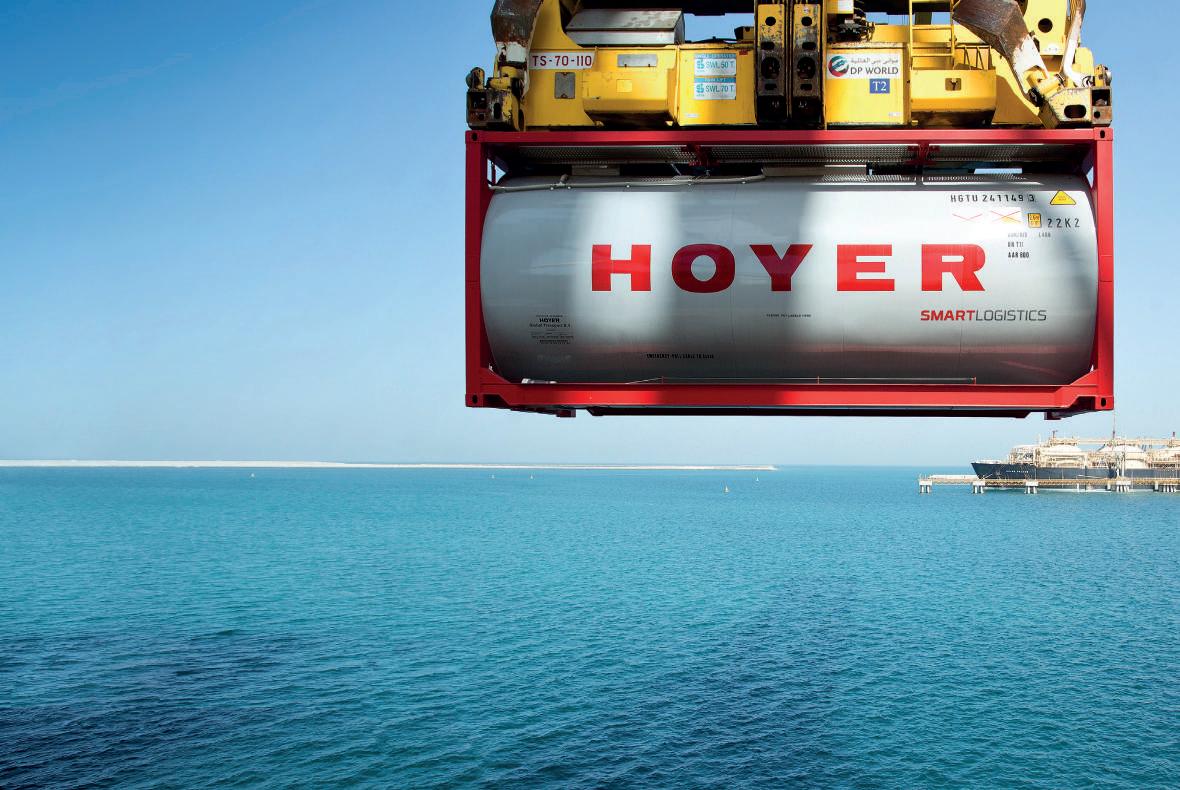
HCB MONTHLY | FEBRUARY 2018 06
THE RESULTS ARE IN
MARKET •THE CHEMICAL TANKER MARKET STAYED
came at the start of this month with StoltNielsen’s annual results. The company’s financial year runs to the end of November so it is always the first to report.
TURN OF THE YEAR
DURING THE COURSE OF the past year, it became increasingly apparent that the chemical tanker market was moving swiftly back into balance, after too many years of over-supply depressing freight rates. That recovery was founded partly on strong demand, helped by a blossoming clean petroleum product (CPP) market that pulled swing tonnage out of the chemicals sector, and partly on a small orderbook, resulting both from a lack of appetite for investment
during the market downturn but perhaps more critically on a lack of clarity over the best choice of propulsion given the uncertainty over future environmental restrictions. Later in 2022, however, global economic conditions, especially rising inflation and high energy prices, which had a dramatic impact on chemical production in Europe, threatened to derail that market improvement. The first chance we have to tell exactly how that reversal affected chemical tanker owners
For its fourth quarter, to end November 2022, Stolt Tankers recorded an improvement in net profit for the fourth consecutive quarter, as spot rates and volumes continued to improve. Operating profit rose from $61.1m in the third quarter to $78.2m, with total revenues up 1.9 per cent at $412.4m.
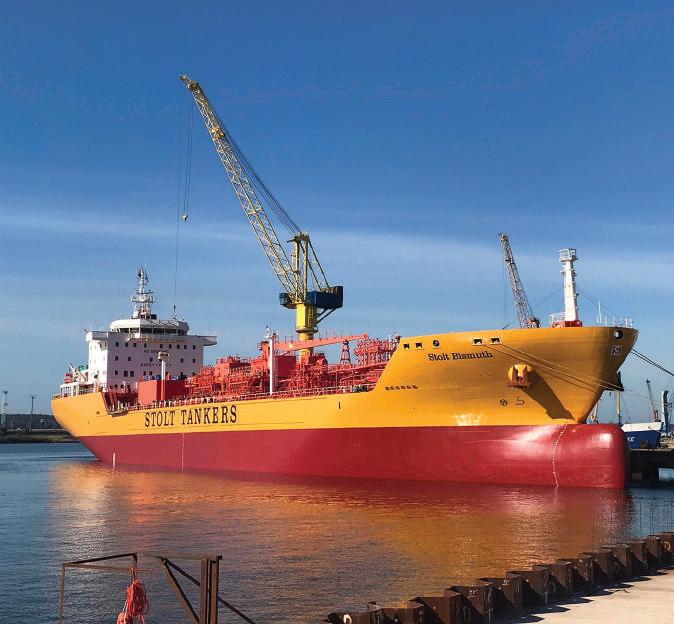
The improvement was felt largely in the deepsea business, where revenues were up by $24.4m on the back of a 4.1 per cent average increase in freight rates and a 3.9 per cent rise in volumes; in revenue terms, this was offset by a reduction in bunker surcharge revenue as bunker prices fell by 25.1 per cent compared to the third quarter. Revenue from the regional fleets was down $5.9m during the quarter, predominantly reflecting weaker performance in the European barging service due to higher water levels on the river Rhine causing lower freight rates.
The key to the market can be found in contracts of affreightment (COAs); renewals done during the fourth quarter were, on average, up by almost 30 per cent, which will have a positive effect over the coming year. It was also a good time to be renegotiating renewals, as the end of the calendar year is very busy, as Niels G Stolt-Nielsen, CEO of Stolt-Nielsen Ltd, explains:
“For Stolt Tankers, the fourth quarter into the first quarter is the peak contract renewal season with about 55 per cent of total contracts up for negotiations. In addition [to increased rates], we have successfully tightened terms in the contracts.” That reflects a shift in market power in a tight market, where owners feel capable of dictating terms, although it was not without its risk and, Stolt-Nielsen says, some 16 per cent of the contract portfolio was not renewed as some customers were not prepared to accept the increases that were asked for.
“Most of these customers are currently operating in the spot market,” Stolt-Nielsen adds. “With little to no growth in the global
WWW.HCBLIVE.COM TANKER SHIPPING 07
STRONG TO THE END OF THE YEAR AND, WITH LITTLE NEW CAPACITY COMING ONSTREAM, LOOKS SET TO STAY FIRM FOR A WHILE YET
chemical tanker fleet in the next few years, and newbuilding orders not available for delivery prior to 2026, we expect continued strengthening of our tanker markets.” That implies more power to the owners and greater control over rates and contract terms.
THE YEAR TURNS GREEN
For the year as a whole, Stolt Tankers saw a 28.4 per cent increase in revenues to $1,497.1m; earnings in the deepsea sector were up by 29.8 per cent at $1,257.3m, while regional fleets recorded a 21.8 per cent rise to $239.8m. Overall gross profit was up by 66.7 per cent at $260.8m, operating profit was ahead by 141.1 per cent at $205.1m and EBITDA rose 43.4 per cent to $358.8m.
That impressive financial performance has come at a time when all stakeholders in the energy and chemical supply chains are being expected to meet the challenges set by environmental targets. Stolt Tankers itself is aiming to reduce its greenhouse gas emissions by 50 per cent by 2030, compared to 2008 levels, and is also aware that it is in prime position to help its clients achieve their own sustainability targets. “Making
sustainability a key part of our culture is a big priority for us over the next couple of years,” says Gabriel Poritz, business partner, Sustainability and Decarbonisation, at Stolt Tankers. “It’s important to get to a place where our decision-making always considers the impact on the world around us as well as the profitability of the company and the safety of everyone involved.”
As has become evident over the past few years, no one company can do much on its own and Stolt Tankers is partnering with industry groups, including the Mærsk Mc-Kinney Møller Center for Zero Carbon Shipping and several industry-led future fuel initiatives. Stolt Tankers wants to be a proactive player, helping to drive positive change in the industry. Achieving that means more than working to make its own operations more sustainable – it also means helping customers achieve their sustainability goals too. “We want to be heard when it comes to the decisions being made by industry bodies, regulators and our peers,” says Poritz. “That way we can help move things forward and create the best results for our customers as well as the wider maritime industry and the planet.”
ONE FOR ALL
As Stolt Tankers moves forward on its own sustainability journey, it is finding more and more ways to help its customers on theirs too. From transporting less carbon-intensive fuels to supporting clients with their compliancerelated disclosures, this additional support is helping the company become an even more valued partner to its customers.
As well as helping customers explore ways to transition to biofuels, one of the most valuable ways Stolt Tankers is supporting customers is through transparency. The company’s Scope 1 emissions are Scope 3 for its customers – which can be difficult to calculate and verify but are increasingly required as part of sustainability-related disclosures. “Collaboration is impossible without transparency, and we have implemented the right tools and systems to provide customers with the information they need,” says Poritz. “They really value us being able to provide data on every one of the cargoes we ship for them.”
That partnership approach was demonstrated very clearly on 23 January this year in Gothenburg, when the tanker Stolt Sandpiper, which operates as part of the E&S Tankers pool, carried out the first ship-to-ship methanol bunkering operation on a non-tanker vessel, Stena Line’s ro-pax Stena Germanica The successful bunkering was a collaborative effort between the Port of Gothenburg, which was the first in the world to publish operating regulations for methanol bunkering in April 2022; Stena Line, the owner of the vessel and the purchaser of the methanol; methanol producer and supplier Methanex; and Stolt Tankers, which carried out the bunkering itself.

“Stolt Tankers is delighted to have taken part in this world-first for methanol bunkering,” says Lucas Vos, president of Stolt Tankers. “We are committed to our own journey towards carbon neutrality and to working with industry partners to explore ways to decarbonise the maritime sector as a whole. This project shows that, through collaboration and innovation, we can make real progress towards a more sustainable future for the industry.”
www.stolt-nielsen.com
HCB MONTHLY | FEBRUARY 2023
08
RAS
RISK & HAZARD MANAGEMENT
Understanding and facilitating the effective management of risk is our core business. Our expertise covers the full range of risk assessment and management services.
SAFETY BUSINESS ENVIRONMENT
Only when the risk facing an organisation is well understood can it be effectively managed. Key to the successful identification, assessment and management of risk is engagement with the right people, using the right processes at the right time. We believe we are different to many of our competitors and our approach is distinctive, we don’t always walk the well-trodden path but look at each client’s particular risk context and develop a tailored solution, working in partnership with our client.
We work across all aspects of risk, from Quantitative Risk Assessments and Predictive & Consequence modelling, through to the ‘softer’ risks which may affect an organisation’s reputation.


Cogent assured providers –Process Safety Management for Operations (PSMO)
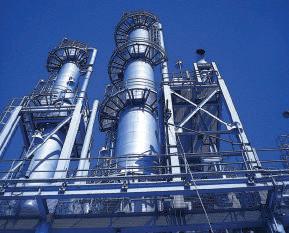





Authorized distributor for Wolters Kluwer – BowTieXP software
ONLY CONNECT
to Marlink’s smart hybrid network, a process that relied on close co-operation and a commitment to quality,” says Tore Morten Olsen, president, maritime at Marlink. “We look forward to fully service Uni-Tankers’ global operations with the best-in-class network solution.”
GREENER SHIPPING
Uni-Tankers’ commitment to enhancing its operations has extended to initiatives designed to reduce fuel consumption and greenhouse gas emissions from its owned fleet, which have been rolled out since 2020. In addition to implementing alternative fuels, energy efficiency devices remain a key lever to reducing consumption of conventional fossil fuels and thereby minimising its carbon footprint.
“In Uni-Tankers, we are continuously looking for ways to reduce our overall impact on the environment. As a result of these efforts, we have installed fuel-saving technologies on most of our owned fleet, resulting in documented fuel savings of 8-15 per cent per vessel depending on the system installed,” the company states.
OPERATING CONDITIONS ABOARD
oceangoing ships present something of a challenge to digital systems developers: ships are subject to a great range of physical shocks and meteorological conditions, while operating far from land. Nevertheless, there are ways to do it, as Marlink, a Norway-based specialist, has shown.
Danish shipping company Uni-Tankers, which owns a fleet of 15 product and chemical tankers, was looking to implement a digital strategy that would combine hybrid highthroughput connectivity with cloud-data access, remote IT support, and proactive cyber-security to improve performance and operational safety. It turned to Marlink, which has now equipped all those vessels with future-proof smart network solutions, combining the full potential of global VSAT, L-band backup and global 4G connectivity, together with a range of digital solutions including CyberGuard and ITLink. Through its

XChange platform Marlink will deliver a fully managed service including network management and secure file transfers between ship and shore.
“Uni-Tankers’ business is built on highquality service and long-term relationships, and the safe operation of our vessels has the highest priority of both the company and our people,” says Michael Hust, IT manager at Uni-Tankers. “Partnering with Marlink has enabled us to take our fleet operations to a new level, increasing both operational flexibility and safety, which in turn enables us to deliver an even higher level of service to our customers.”
Marlink says this hybrid network solution will enable Uni-Tankers to further enhance its operations, including high volume data transfer to and from its vessels for safe and efficient navigation as well as compliance with prevailing vetting and inspection regimes. “We are delighted to have completed this successful migration of the Uni-Tankers fleet
The systems installed vary from vessel to vessel, as not all engines can benefit from the same technology. Most of the systems installed are so-called adaptive ‘on-top’ systems that ensure constant optimisation between engine and propeller, while others are an upgrade of the control system.
So far, nine of Uni-Tankers’ 15 owned tankers have been retrofitted with fuel-saving technologies, with two more scheduled to have the work done this year. Uni-Tankers is also planning to test a new hull coating on the 4,700-dwt Fenno Swan when it drydocks in April, with the aim of reducing frictional resistance in the water.
“In Uni-Tankers, we are continuously looking for ways to optimise our fleet, and with the help of new technologies, we are able to reduce our carbon footprint, living up to our ambition of being a responsible tanker operator,” says Kristian Larsen, technical director.
uni-tankers.com
marlink.com
10 HCB MONTHLY | FEBRUARY 2023
DIGITALISATION • NETWORKING MARITIME OPERATIONS IS NOT AS SIMPLE AS IT IS ASHORE. MARLINK DEMONSTRATES HOW IT HAS TRANSFORMED UNI-TANKERS’ FLEET OPERATIONS
TUGGING ALONG
The Amogy system will keep the ammonia tank pressure low, enabling Southern Devall to deliver ammonia to its customers and increase the utilisation and profitability of its fleet.
Following the barge integration and demonstration, Amogy and Southern Devall plan to pursue retrofits of additional barges and tugboats, creating an ammonia-powered fleet that includes cargo vessels as well as bunkering barges for efficient, emission-free refuelling of ammonia-powered ships.
WORK TO BE DONE
“Amogy has built an impressive platform that our team believes is an ideal solution for introducing cost-efficient, zero-carbon bunkering and powering operations to the inland barge industry,” says Sam Lewis, vice-president of engineering at Southern Devall. “Adopting their solution at scale in our fleet has both environmental and economic benefits through increased delivery volume. We look forward to demonstrating the value of ammonia-to-power solutions in our first project with Amogy and introducing industry and channel partners to these innovations.”
AMOGY INC HAS established a strategic partnership and technology deployment project with Southern Devall, which specialises in the transport by tank barge of liquid chemicals and fertilisers on the Mississippi River and Gulf Intracoastal Waterway. The partnership will centre on the application of Amogy’s ammonia-to-power technology in barge propulsion.
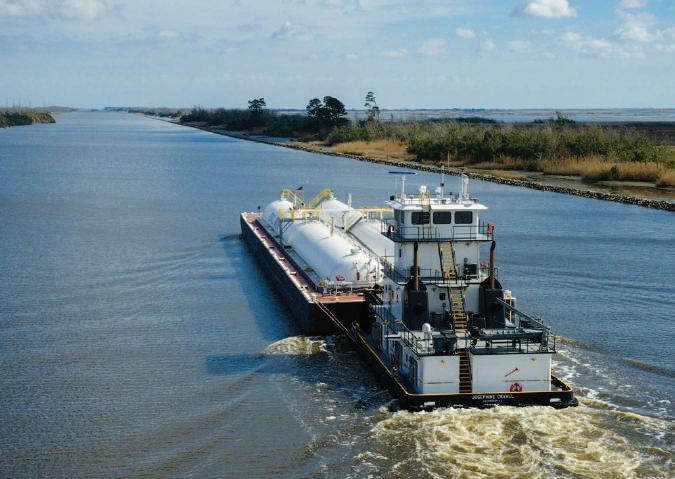
As with the spread of alternative power sources for oceangoing ships, the project rests on the common nature of cargo and fuel: Southern Devall services a significant proportion of the ammonia production market in the US and delivers ammonia to terminals for export and agricultural and chemical
customers along the country’s inland waterways. Amogy’s proprietary ammonia-topower system converts ammonia into hydrogen for use in fuel cells or as a more energy-dense method of long-distance hydrogen transport and has already been proven in agricultural applications; it is now being scaled for use in larger applications, including ships and ammonia bunkering barges to support the maritime industry’s decarbonisation efforts.
The partnership will, Amogy expects, also give it access to vast ammonia infrastructure as well as the Southern Devall team’s expertise in handling ammonia and maritime operations.
The first part of the project involves the retrofit of an existing barge, which is expected to be completed this year. An Amogy powerpack will generate the power needed to reliquefy ammonia as it heats up over the course of a voyage, instead of a diesel genset.
Amogy notes that the US inland shipping sector is responsible for annual CO2 emissions of some 6.2m tonnes and that many operators in the sector rely on older equipment. It hopes that the project will prove the viability of refurbishing fleets to improve quality and introduce zero-carbon power and bunkering capabilities.
Southern Devall was formed in 2021 when Southern Towing acquired Devall Towing, a family-owned firm established in 1952 that already had a specialisation in handling chemicals and was largely focused on coastwise transport. This past October, Devall said it was planning to integrate the operations and management of the two companies during the course of this year. The combined fleet comprises some 230 barges, 70 towboats and around 700 employees. Southern Devall is headquartered in Sulphur, Louisiana and is a portfolio company of CC Industries, a Chicagobased management company for the Crown family’s privately held companies.
amogy.co
www.devalltowing.com
www.southerntowing.net
WWW.HCBLIVE.COM
FOR A TRANSPORT COMPANY MOVING AMMONIA, IT MAKES SENSE TO BE ABLE TO USE SOME OF THAT AMMONIA TO POWER THE BARGES THAT CARRY IT
AMMONIA • THE ENERGY TRANSITION IS COMING TO THE NORTH AMERICAN BARGE SECTOR, WITH AMOGY’S AMMONIA-TO-POWER SOLUTION TRIALLING IN A PROJECT WITH SOUTHERN DEVALL
TANKER SHIPPING 11
NEWS BULLETIN
TANKER SHIPPING
VEDER HELPS OUT AT LUBMIN
Anthony Veder has committed three of its 10,000-m3 small LNG carriers to Deutsche ReGas to work at its new floating receiving terminal in Lubmin, on Germany’s Baltic coast. The three ships, Coral Furcata, Coral Favia and Coral Fraseri, will work as shuttle vessels, bringing LNG from oceangoing ships anchored off the port into its narrow channel for transfer to the floating regasification unit.
‘We are proud that we have been selected by Deutsche ReGas for supporting their floating LNG terminal,” says Jan Valkier, CEO of Anthony Veder. “As an integrated shipowner with extensive experience in ship to ship operations worldwide we are looking forward to collaborating with all parties involved to successfully bringing LNG via this new distribution route to Germany.”
To strengthen Anthony Veder’s role in the new import facility, the Rotterdam-based gas tanker specialist has also taken a minority shareholding in the Lubmin LNG terminal. anthonyveder.com
CONNECT THE TANKS
Scanjet PSM has developed a new tank monitoring system, certified for marine use,
based on its existing VPM central monitors with an enhanced processing unit capable of receiving input from multiple sources. The new Connect system is, Scanjet says, suitable for all tank gauging applications and has already been installed on naval oil tankers, fishing vessels and a land-based tank farm.
All signal processing and data calculations are undertaken within the Connect central processing unit and multiple input ports ensure virtually limitless expandability. Tank tables, trim and heel correction, specific gravity, overpressure, temperature, and all other related parameters are considered to provide accurate real-time display tank status. Information from Connect can be displayed in multiple formats, depending on user preferences, such as tabular, bar graph, tank plan and hybrid views. Tanks may also be grouped with dedicated alarm pages showing warnings and status at all times. psmmarine.com
STOLT HELPS SAVE THE WHALE
Stolt Tankers says it is to change its sailing patterns in parts of the world where large marine animals live and feed. In line with IMO guidance, Stolt ships travelling in waters south of Sri Lanka, the north-west of the

Mediterranean Sea, the waters around Vancouver Island and the east coast of the US will modify their routes and reduce their speed by 20 per cent to minimise the impact of shipping on the whale population and reduce the likelihood of physical injuries due to collisions.
“We believe that Stolt Tankers has an important role to play in protecting the oceans that are the lifeblood of our business,” says Lucas Vos, president of Stolt Tankers. “By reducing our voyage speed from 12.5 knots to 10, we can significantly help to reduce the risk of ship collisions with whales. I am proud that we have taken another step on our sustainability journey, and in supporting the UN Sustainable Development Goal which is focused on protecting life below water. By raising awareness of these issues, I hope it encourages others in the maritime industry to follow suit in helping to conserve and protect our oceans and marine wildlife.”
www.stolt-nielsen.com
DORIAN HELPS DECARBONISATION
Dorian LPG has signed a partner agreement with the Mærsk Mc-Kinney Møller Center for Zero Carbon Shipping; Dorian says that, as one of the leading VLGC owners and operators, with in-house technical and commercial management, it will be able to share its experience and capabilities that are relevant to driving the decarbonisation of the maritime sector.
John Hadjipateras, chairman and CEO of Dorian LPG, says: “To meet and exceed the industry’ decarbonisation targets there is an essential need for research and development collaboration amongst shipping and logistics organisations. We believe that the Center is performing a very important service to the industry and are happy to contribute Dorian
12 HCB MONTHLY | FEBRUARY 2023
expertise from Copenhagen, Athens and the US to help facilitate some of their important work.” www.dorianlpg.com
FOUR MORE FOR THUN
Thun Tankers has ordered four 7,999-dwt coastal tankers from Ferus Smit, taking the newbuilding order to six R-class tankers, which will be deployed in the Gothia Tanker Alliance. The first of the six is due for delivery in the second half of 2024.
The tankers have been designed to be the most resource-efficient vessels on their trade lanes. “Thun’s long experience of building high performing quality vessels has been used in the design process. We have been combining this with a number of new features to further improve performance while reducing our climate footprint,” said Joakim Lund, CCO of Thun Tankers, at the time of the first orders were placed in May 2022. thuntankers.com
TERNTANK HAS WIND IN ITS SAILS
Terntank has ordered two 15,000-dwt chemical/product tankers, with options for two additional vessels, at China Merchants Jinling for spring 2025 delivery. The new tankers, designed by Kongsberg, will be able to run on biofuels or methanol and also feature wind assistance fixed sails as well as the Hybrid Solution battery pack/shore connection that was installed on Terntank’s two latest newbuildings.
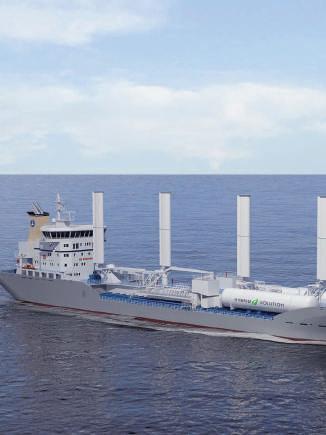
The design of the new tankers will reflect the experience with the earlier six AVIC-series vessels with additional innovative improvements to reduce environmental impacts. Building on the 40 per cent CO2 emissions reduction made on those vessels, the wind assistance will further reduce emissions by 8 per cent and, with methanol’s potential in terms of decarbonisation, the new ships will
accelerate Terntank’s pathway to net zero. The efficient design also results in an EEDI between 16 and 40 per cent below the 2025 Phase 3 requirements.
The new vessels will be built with 14 cargo segregations; it is expected they will be employed to transport biofuel feedstocks to refineries and pick up finished biofuels for distribution. terntank.com
IINO CARRIES ETHANE FOR INEOS
Iino Lines has signed a long-term timecharter agreement with Ineos for two 99,000-m3 very large ethane carriers. The newbuildings are due to be handed over in 2025 and 2026 and will take Iino’s ethane carrier fleet up to 18 vessels.
“This is a brilliant milestone for Iino in terms of transporting liquefied ethane gas, a new liquefied gas cargo, and we also believe that it will contribute to the expansion of our new energy transportation business,” says Hiromi Tosha, president of Iino Lines.
David Thompson, CEO of Ineos Trading & Shipping, adds: “This deal is another major step forward for Ineos Trading & Shipping and signifies our ongoing growth in ethane trade. IINO Lines are a highly experienced ship owner, with a strong focus on safety, reliability, and efficiency. We are very pleased about this new long-term partnership.” www.iino.co.jp
EVERGAS NOW SEAPEAK
Seapeak has concluded its previously announced acquisition of Evergas from Jaccar Holdings in an all-cash transaction of some $700m. Evergas will now be rebranded and operate as a wholly owned subsidiary of Seapeak. “At Evergas we are pleased to complete the sales process and become part of Seapeak - one of the gas industry’s biggest players, which also brings us significant financial strength,” said Steffen Jacobsen, CEO of Evergas, when the deal was first revealed this past October. “This will provide a solid platform on which we can continue to grow our businesses in NGLs and CO2, where we see outstanding potential for growth.”
“Acquiring Evergas is another big step in Seapeak’s evolution as a leading owner and operator of liquefied gas carriers,” commented Mark Kremin, Seapeak’s CEO, at the time. “Just as we’re bullish on LNG, we’re also bullish on natural gas liquids (NGLs), especially given the even greener nature of NGLs. Already a world leader in NGLs, Ineos is now growing in LNG, and we are thrilled to be adding them as a key customer, further diversifying our portfolio.”
Seapeak, which was formed out of Teekay LNG Partners on its acquisition by Stonepeak in January 2022, now has interests in 51 LNG carriers, 20 mid-size LPG tankers and six Multigas carriers, including newbuildings on order.
www.seapeak.com
TANKER SHIPPING 13
WWW.HCBLIVE.COM
THE MIDDLE WAY
WAREHOUSING • LESCHACO IS PLANNING TO ADD TO ITS GROWING CHEMICAL WAREHOUSE NETWORK WITH A NEW LOGISTICS CENTRE IN MOERDIJK, DUE TO OPEN LATER THIS YEAR
LESCHACO IS PLANNING to open a chemical logistics centre in Moerdijk, situated strategically between the major ports of Rotterdam and Antwerp and with optimal accessibility to the European hinterland. In January this year, Leschaco signed a lease with David Hart Group (DHG), an industrial land developer, for a new ADR warehouse on the site. The new facility is scheduled to be ready in the third quarter of this year.
The planned warehouse will offer some 45,000 pallet spaces on a footprint of 29,000 m2. It will be divided into five areas, with one for general cargo and the other four being designed to handle chemicals and other dangerous goods and featuring a CO2 fire extinguishing system.
“This project is an important strategic milestone for our presence in Europe. It is also necessary to meet the increasing demand in the region and to be closer to our customers,” says Constantin Conrad, managing partner of Leschaco Group.
The location certainly provides that proximity, with daily barge traffic along the Rhine and Meuse systems between Rotterdam and Antwerp, as well as two public rail terminals in the vicinity. Moerdijk guarantees optimal accessibility to the European hinterland and ensures that customers’ products are transported in an efficient manner in terms of cost, speed, accessibility and frequency, Leschaco says.
That approach is the same as the company
took in opening its chemicals warehouse in Port Klang, Malaysia at the start of 2022, taking advantage of rapid growth in contract logistics in the chemicals sector in the country. At the time, country manager Lothar Lauszat said: “The constantly growing demand from the chemical industry made the new building urgently necessary. This investment is of great strategic importance for our existing and new customers.”
MEET AND GREEN
The new Moerdijk site will fill a similar need. “The new logistics centre offers our global customers in the chemical, healthcare, automotive, industrial materials and consumer goods sectors a wide range of services and, in combination with other Leschaco products, complex logistics solutions at the highest level,” says Sebastian Haebler, head of Global Contract Logistics at Leschaco. “In addition to pallet storage, this includes various kinds of value-added services according to our customers’ demands.”
The new building meets all safety and environmental standards. Solar panels on the roof will be able to cover part of the electricity demand. Other sustainable measures, such as the use of electric floor heating instead of gas or oil installations, LED lighting, and the highest construction standards for isolation, also contribute to improving the climate balance, as do the short distances to the port of Moerdijk for transport by barge and rail and e-charging stations for cars.
DHG is the biggest developer of large logistics real estate in the Netherlands and, since 2015, has realised more than 1.3m m2 of distribution centres using the ‘SmartLog’ concept. These distribution centres are designed in such a way that they are suitable for a wide range of types of user. DHG’s owner, David Hart, says: “Leschaco and DHG are both family businesses; our motivation, standards and values are very similar. Partly for this reason, we are honoured to add Leschaco to our DHG ‘family’ and to be a part of their expansion within Europe.”
www.leschaco.com
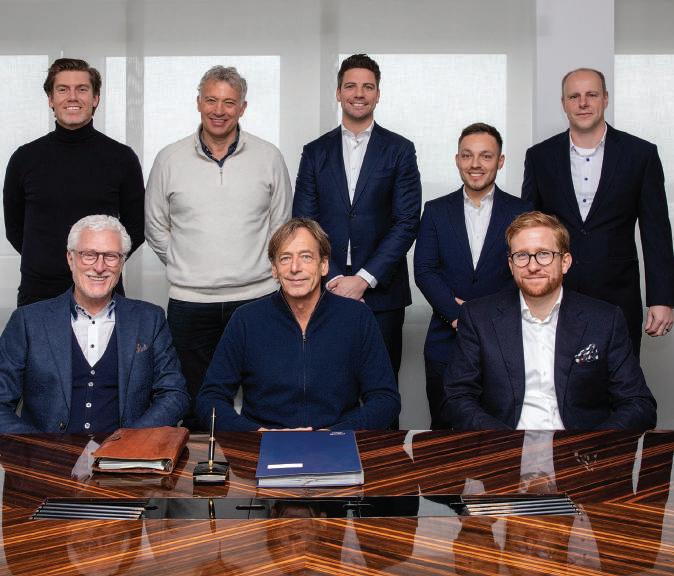
14 TANKS & LOGISTICS HCB MONTHLY | FEBRUARY 2023
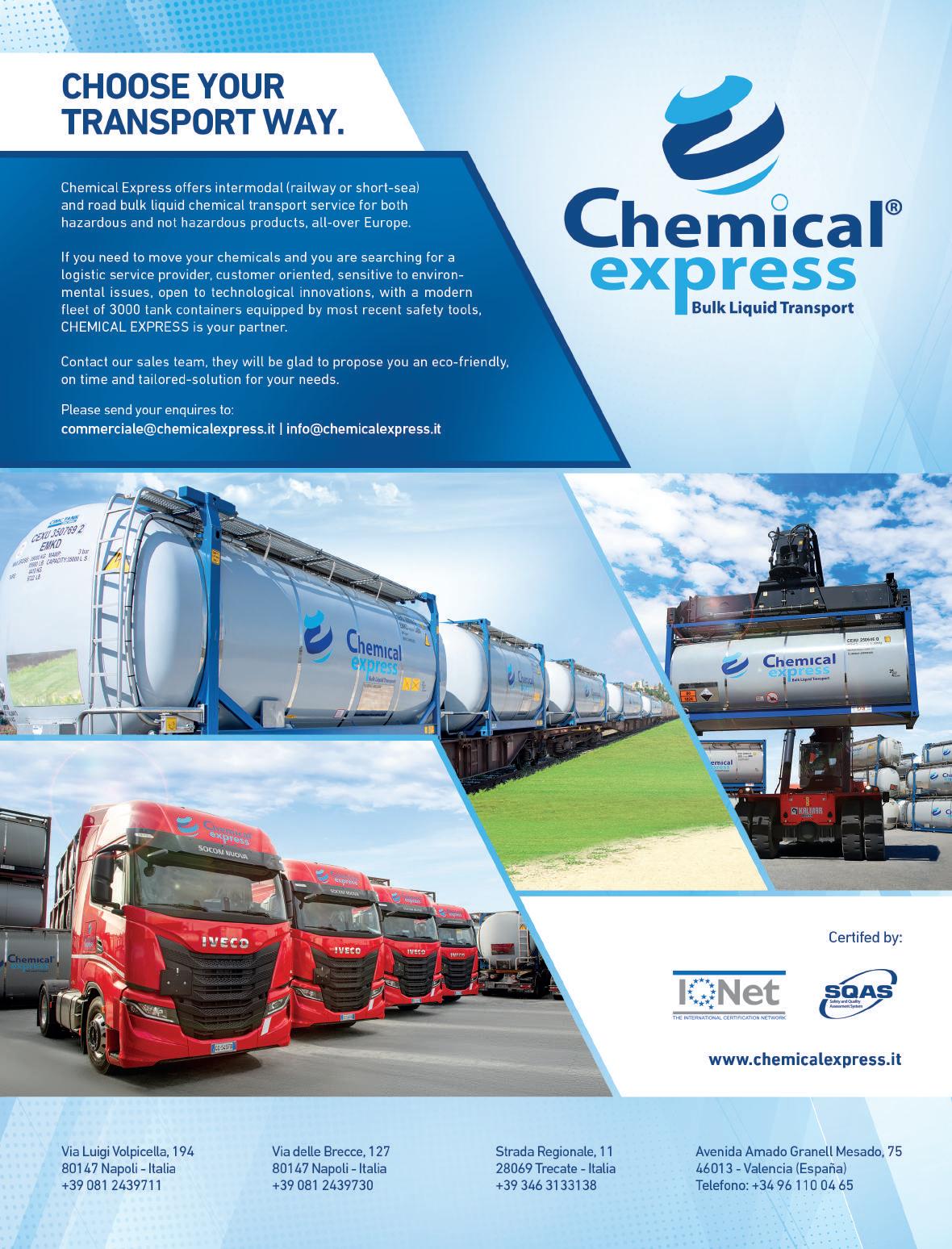
CAUTIOUSLY OPTIMISTIC
relief valves. We are reconfiguring the space to enlarge our office and warehouse facilities in order to improve the service we can offer to our customers in the Americas.
Our UK webshop had a very successful launch, with a 30 per cent increase in sales since last year - consequently, the webshop is opening up to the European market in March.
IN THE FUTURE , historians may look at the early years of the 21st century and wonder how we all managed to navigate the choppy waters of boom, bust, recession, recovery, epidemic and war. For many, these factors have caused strife and uncertainty in an already turbulent marketplace, but I am thankful (and happy) to say that, as 2023 begins, it’s starting to look as if we may be over the worst.
It is, of course, a dangerous hobby to predict the future and I’m not going to tempt fate by starting now, but I would suggest that after two rollercoaster years we may be entering a period of relative calm. Energy prices are on the way down as Europe has succeeded in sourcing alternatives to Russian gas (although the continuation of the war in Ukraine has the potential to destabilise these efforts); Covid would appear to be receding in its effectiveness; the logistics nightmare of 2022 is abating and supplies of raw and finished materials are getting back to normal. So while
I think it may be premature to start waving flags, I’m hoping that good, old-fashioned stability is coming into fashion again.
At Fort Vale, our love of forward planning has paid dividends, and we are in a sound position after two consecutive years of outstanding results. As ever, we look to the future and plough the profits back into the company, so that we can safely expand our operations to cater for the needs of our growing customer base.

OUT AND ABOUT
I have mentioned our rapidly growing rail business in these pages before. In the last half of 2022 we launched our RAILTYT Range to a significant amount of interest from customers old and new, and our market share has increased dramatically. As a result, our US operation is undergoing the substantial redevelopment of the Houston site, enabling us to increase our abilities in servicing gas equipment for T50 gas containers and AAR
Back in the UK, our apprenticeship scheme has broken all records - maintaining our strategic advantage in succession planning and retaining the capital intelligence that is vital to maintaining growth in any business.

And speaking of growing business, I’d like to say what a pleasure it was to finally attend some exhibitions last year. We had an excellent showing at Innotrans and Intermodal - customer and supplier engagement was at an all-time high, and it was good to see so many friends again after the long Covid layoff. We found ourselves being offered opportunities in interesting new directionsI’m not allowed to say anything about that just yet - but I am looking forward to attending StocExpo in March, and we will also be at Transport Logistic and, of course, Intermodal once again.
So where does that leave us? Well, hopefully to a year of cautious optimism and steady growth - so slightly more boring than the last couple of years - but then again, after the last few years, would that be so bad?
www.fortvale.com
16 TANKS & LOGISTICS HCB MONTHLY | FEBRUARY 2023
OUTLOOK • AS 2023 BEGINS IN EARNEST, GRAHAM BLANCHARD –FORT VALE’S HEAD OF GLOBAL SALES AND MARKETING – LOOKS AT THE YEAR AHEAD AND HOPES IT WILL BE RELATIVELY BORING
Your tank container experts
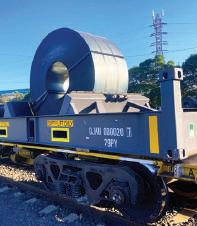
TWS has more than 25 years of experience in renting out standard and special tank containers for liquid products to the chemical and food industries. TWS also provides various sizes of spill troughs. Customers rely on the outstanding quality of its fleet and value its flexibility in terms of volume and technical features.





For more information: E-mail: tws@tws-gmbh.de and web: www.tws-gmbh.de

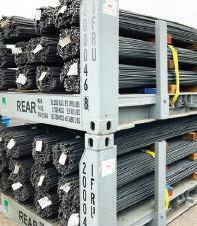
SECTION SLUG 17
TWS_180x124_Kombi_ENG_NEU.indd 1 23.06.16 12:23
POWER OF THREE
were operating, while other specialised reefer equipment production remained in York, Pennsylvania and both Klinges continued to press the products forward into new markets.
Henrik moved with his family to the US in 1986 to run the Klinge facility in York, now called Klinge Corporation. Throughout the 1980s, 1990s and early 2000s Henrik continued to build Klinge’s brand in the industry, also introducing tank container refrigeration and heating equipment as part of the company’s offerings, as well as starting multiple other successful companies, including a refrigerant reclaim company and a booming spare parts business.
THE THIRD GENERATION
Following in his father Henrik’s footsteps and continuing the influx of fresh energy from generation to generation, Allan Klinge joined the company in 2007. Allan brought a renewed passion to focus on the core competencies of Klinge Corporation – innovation, specialised design and customer service. New projects and endeavours followed, including large contracts with the Australian Defence Force and Swedish Defence, all while building on long-term success in the chemical industry and introducing new product lines of explosion-proof equipment for the oil and gas industry.
WITHIN THE EVER-CHANGING world of global logistics, a little consistency goes a long way. And the Klinge family business has consistently been providing high-level service and products since its founding by Paul Klinge just after the Second World War in Denmark.
Paul ventured out to the US shortly after the end of the war, seeking new partners and opportunities and eventually securing representations for companies such as Union Carbide (which at the time included the Energizer and Eveready battery brands), Bendix, Westinghouse and Borg-Warner that later invested in York International, which, among other products, also
produced refrigeration systems for marine transport containers.
In order to maintain the level of consistent service, however, adaptation and fresh thinking was also needed and, in a family business, this often comes in the form of a new generation joining the team. By 1984, Paul and his son Henrik Klinge, who had worked in the company since 1971, were the main agents for the York ocean transport business and would eventually take over the business completely as York focused on other business opportunities. The production of standard reefer equipment eventually moved to Denmark where other Klinge companies
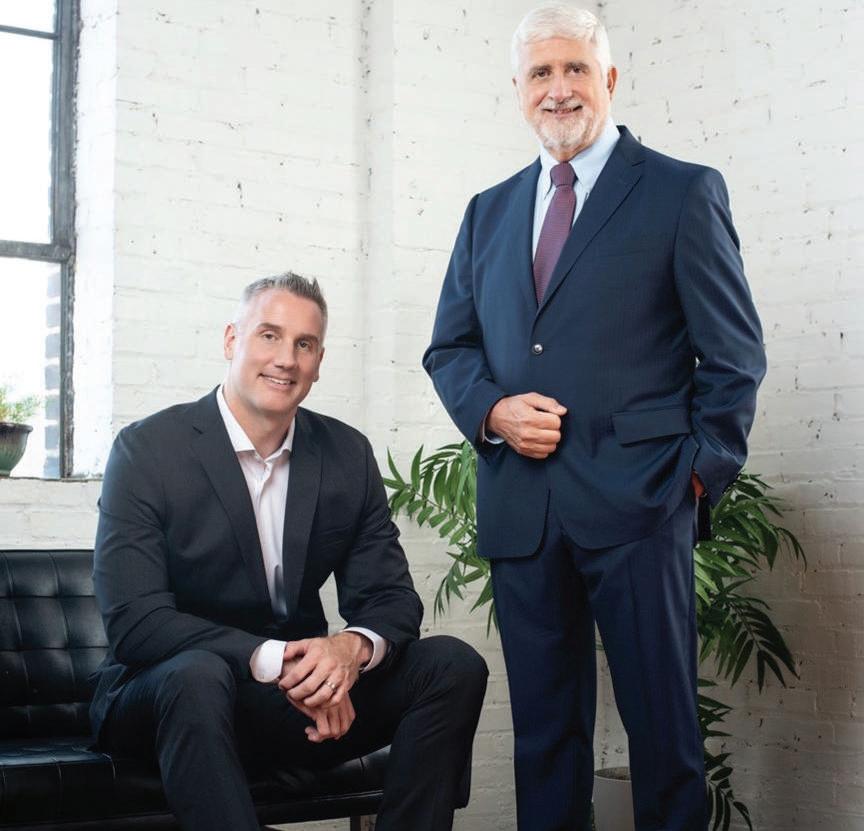
Sadly, while Paul had been a part of the business up until the end, he passed away in 2010 at the age of 88. Henrik and Allan continued on with the work in the US, bringing on new clients in the pharmaceutical and food-processing space, and Allan eventually took over Klinge Corporation completely in 2017, becoming president and then CEO in 2022.
Henrik continues as director and is still deeply involved in the engineering side of the business, while Allan focuses on implementing a series of business process improvement plans to help keep Klinge at the forefront of innovation, while also focusing on building an engaged and passionate team to ensure long-term success – continuing the decades long-trend of generational change. klingecorp.com
18 TANKS & LOGISTICS HCB MONTHLY | FEBRUARY 2023
EQUIPMENT • FAMILY VALUES HAVE PROPELLED KLINGE CORPORATION THROUGH THREE GENERATIONS OF LEADERSHIP, BUT THE FOUNDING PRINCIPLES REMAIN THE SAME
OUTSTANDING EQUIPMENT.
Your tanks need the best equipment to remain efficient, safe and profitable.
The Fort Vale Liquid RAILTYT Product Range of fuel and chemical transfer equipment continues to evolve and expand - ensuring quality, safety and security well into the 21st century.
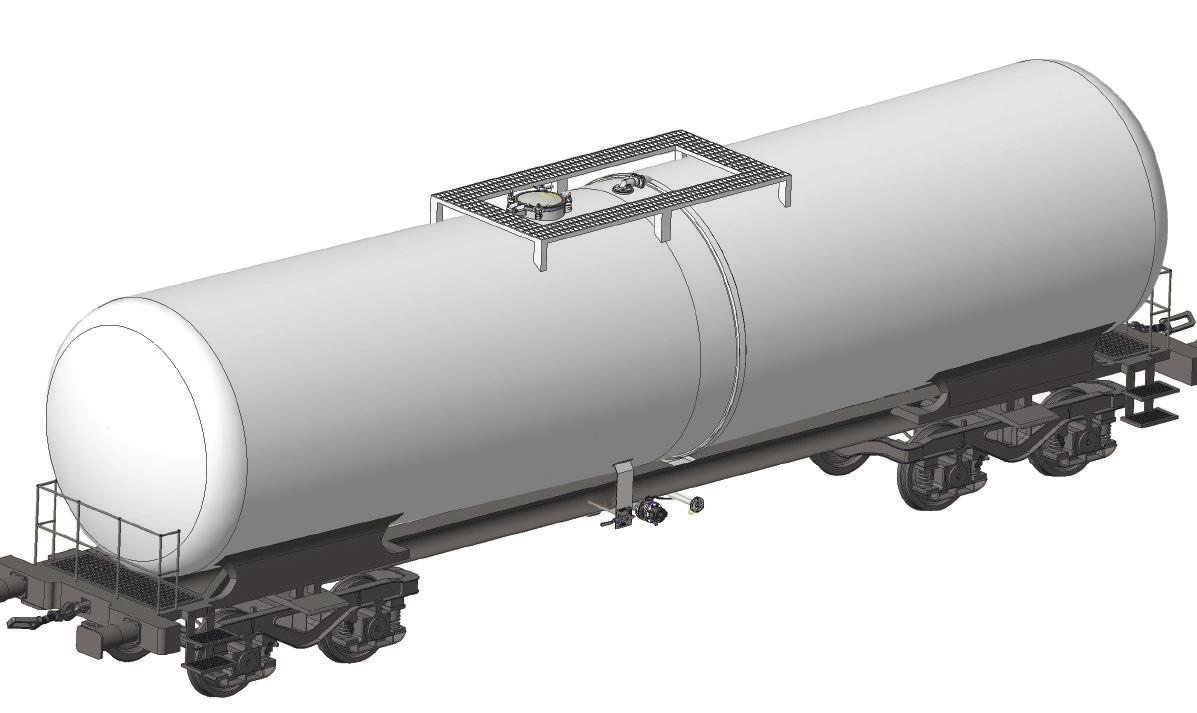
Our vertically integrated manufacturing strategy allows us to precisely control the quality of our supply chain so that you can be confident in the origin, integrity and reliability of all our products.
The large scale of our UK factory, coupled with all the latest production technology gives us an unrivalled manufacturing capacity - allowing us to keep even the largest wagon builders in Europe supplied with equipment that has shown time and again it is safe, easy to operate and built to last.
Contact us at sales@fortvale.com to find out more. So you can keep your tanks on track.
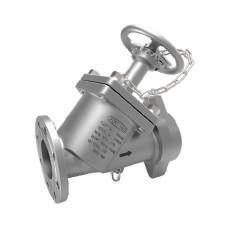

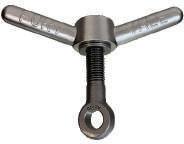
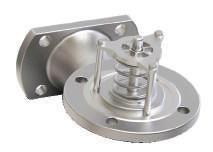
SECTION SLUG 19
Y Type End
® FORT VALE. FOLLOW THE LEADER. Visit us at www.fortvale.com
M24 Swingbolt Ventilation Valve
Valve 5” Bottom Valve
EUROPEAN STOCK. IMMEDIATE DISPATCH.
SPEAK MY LANGUAGE
standardised - especially so when personal data, like truck and driver data, is being shared.
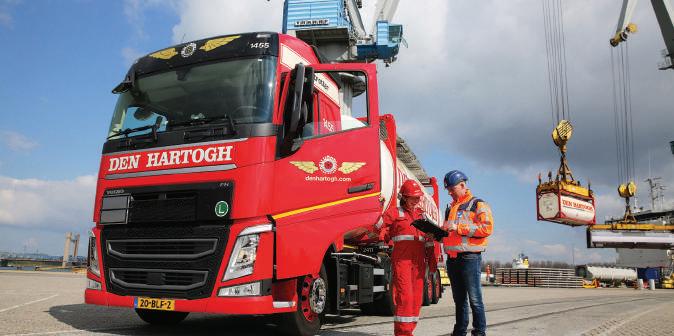
At present, different standards for truck and driver data are used within the transport sector, leading to a multiplicity of data definitions, rules and data requests from each platform provider or company. This lack of truck and driver data harmonisation and standardisation results in a lot of manual work, data input mistakes, different IT interfaces and complexity and extra costs.
ELECTRONIC DATA INTERCHANGE (EDI) within and between companies is now the norm and, certainly in the transport sector, can not only improve accuracy and efficiency but also reveal inefficiencies and lead to better employment of assets. But as EDI systems and other digital networks have developed, different standards and platforms have developed, which is hindering the take-up of some potentially very useful solutions.
The European Chemical Transport Association (ECTA) is well aware of these problems and, in recent years, has done a lot to promote standardisation and best practice in the application of digital systems. It has offered standardised data formats for its members and their business partners to use in areas such as transport orders and asset visibility, but it is not stopping there. Two recently published best practice guidelines address transport invoicing and truck and driver data.
In the order-to-cash process within bulk logistics, additional data next to visibility and order data is exchanged between shippers and logistics service providers. In particular, after the transport operation has been executed, the exchange of invoice-related information takes place to trigger the completion of a service. Besides the freight costs, other cost-related items, such as heating, truck waiting times or other auxiliary services, are handled during the payment process. Furthermore, process scenarios vary case-by-case and can consist of proforma invoices/notifications, debit or credit notes.
ECTA’s Transport Invoicing Data Standards guideline aims to complement the existing
guidelines and give all relevant stakeholders additional guidance on how to facilitate electronic data exchange in this area. The guideline refers to the use of an order data standard based on the Open Applications Group OAGIS® Chem eStandard 5.42 plus some extended bulk-logistics specific attributes being identified by ECTA.
PEOPLE AND PLACES
ECTA’s other new digital guideline addresses data about vehicles and personnel. The Association notes, for instance, that chemical logistics supply chains are being transformed into hyper-connected networks where digital collaboration among all stakeholders is becoming a necessity to help meet customer demands and future societal needs. However, due to the increasing number of different IT platforms, data interfaces and parties involved in the transport and logistics chain, there is more and more need for data to be
A standard format and set of definitions for truck and driver data, exchanged digitally between different parties, will ease digital collaboration and enhance data quality, allowing greater automation and reducing errors and manual input work. There are also efficiency gains to be made: if all parties are collaborating on the same digital standards, waiting times at the gate can be reduced. When sharing truck and driver data it is also important to consider which data can or cannot be shared and how it can be shared, so that personal data is processed confidentially and complies with the General Data Protection Regulations (GDPR). In addition, commercially sensitive truck data should be handled with respect for data ownership. ECTA’s Best Practice Guideline aims to define a standard set of truck and driver data. It also offers recommendations for the digitalisation process, in compliance with GDPR. All ECTA Best Practice Guidelines can be freely downloaded from the ECTA website at https://ecta.com/guidelines/.
HCB MONTHLY | FEBRUARY 2023
20 TANKS & LOGISTICS
DIGITALISATION • AS THE WORLD GETS EVER MORE CONNECTED, IT IS VITAL THAT ALL PARTIES IN A LOGISTICS SUPPLY CHAIN CAN TALK TO EACH OTHER. ECTA IS CONTINUING TO PROMOTE STANDARDS


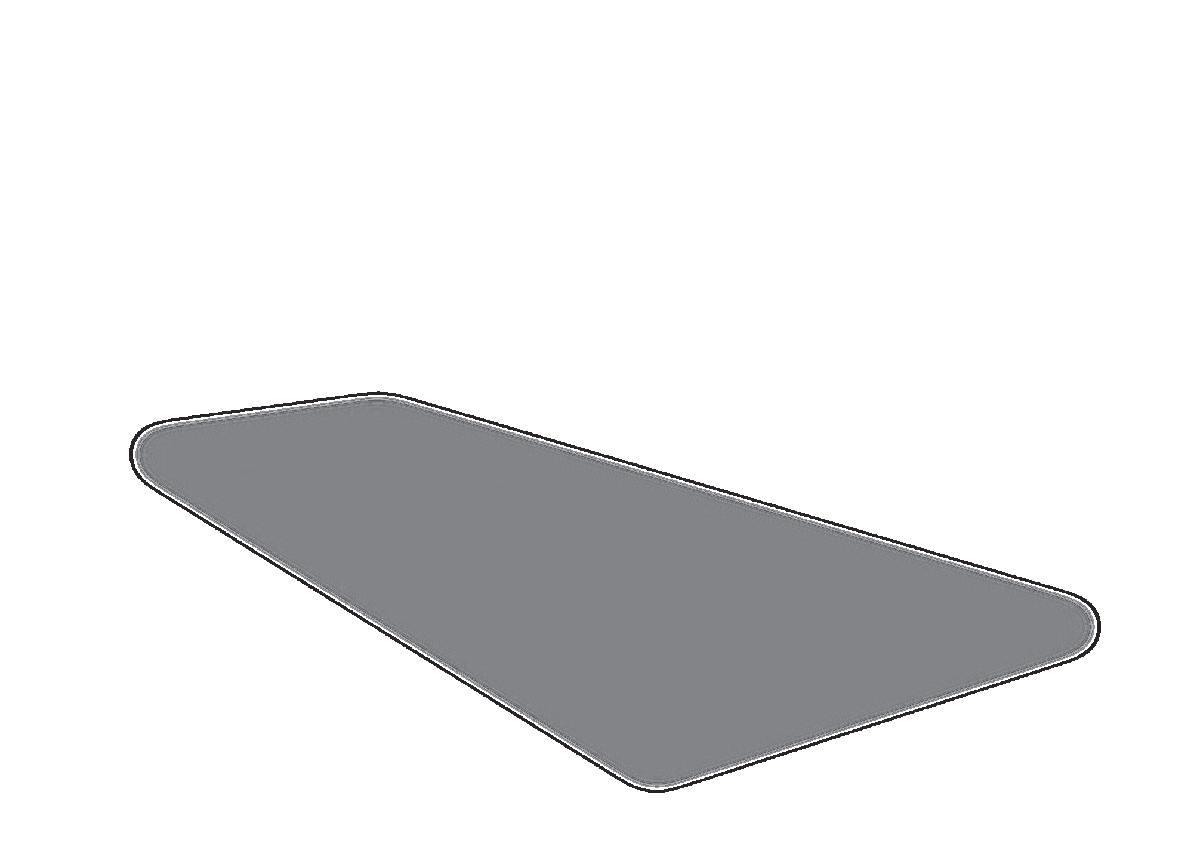
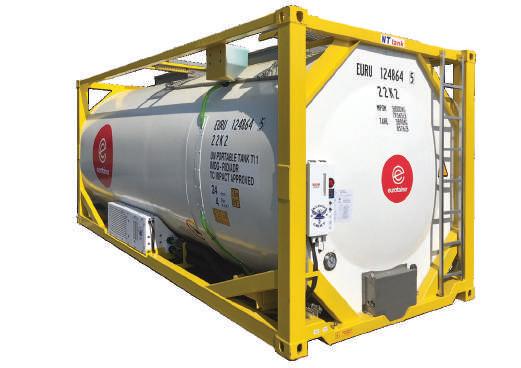
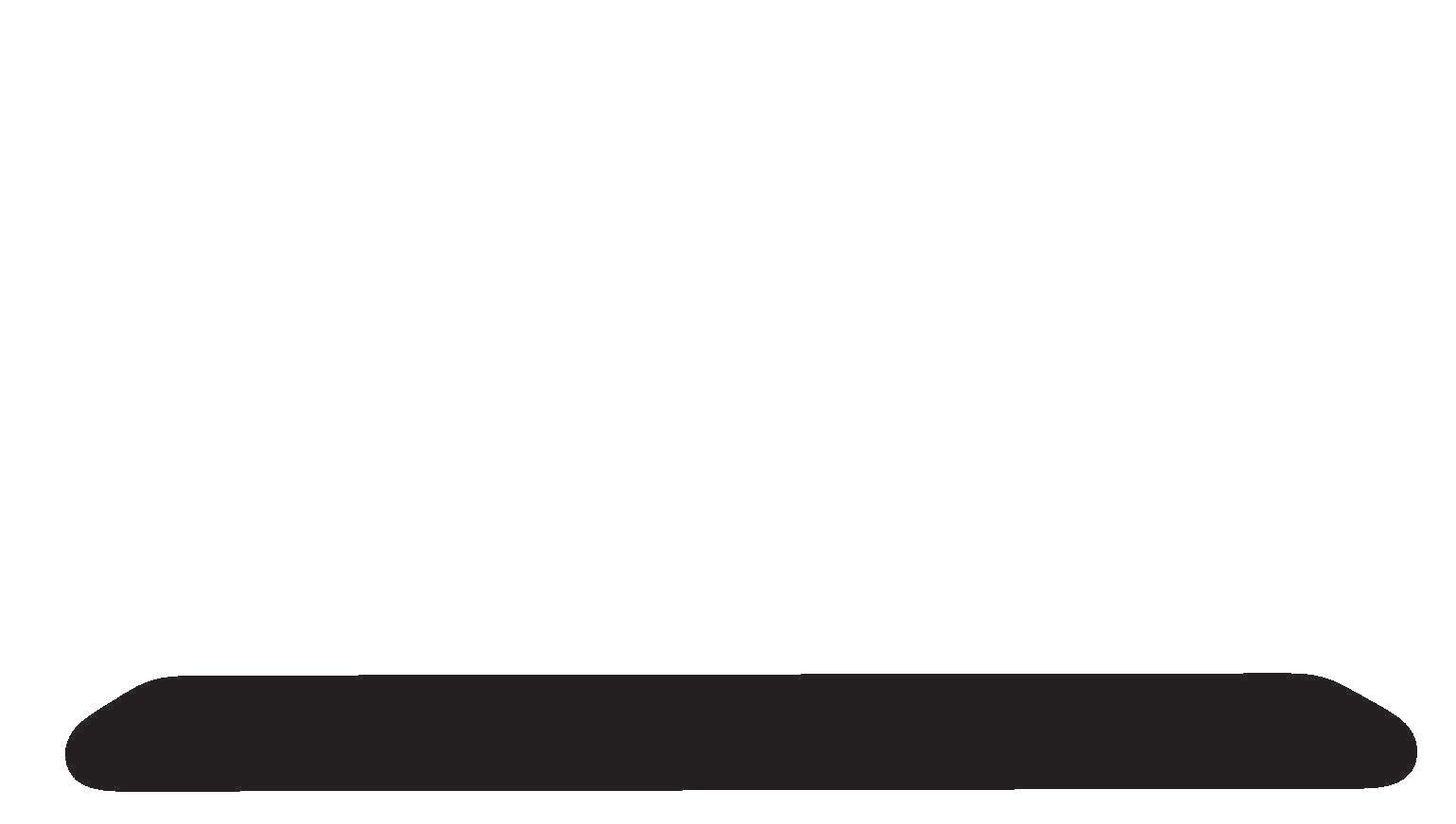

Klinge Corp’s versatile tank container refrigeration and heating units meet the demands of your industrial applications. > Easy installation, low maintenance, and precise temperature controls make Klinge Corp’s refrigeration and heating systems an unmatched long-term value. TEMPERATURE CONTROL UNITS FOR TANK CONTAINERS inquiry@klingecorp.com www.klingecorp.com USA: + 1-717-840-4500 DUAL AND EXPLOSION-PROOF OPTIONS AVAILABLE THE WORLD’S LEADING MANUFACTURER OF TEMPERATURE CONTROL SYSTEMS FOR TANK CONTAINERS
NEWS BULLETIN
ambitious growth strategy, building and strengthening relationships with new and existing customers and continuing to bring high levels of safety and reliability.”
www.suttonsgroup.com
DOB IN BAD SITES
DINGES ADDS REACH
Dinges Logistics has added another reachstacker to handle empty tank containers at its recently expanded operation in Grünstadt, Germany. The new Kalmar unit is equipped with an electronic weighing device and an electronic overload limiter; the spreader is fitted with a ‘soft landing system’ that slows the spreader as it approaches the container, to protect both pieces of equipment.
“We consider the concept of value-added service to be critical to success. For this reason, in particular, we want to continue to grow not only in terms of transport services, which represent our core business, but are pushing for sustainable growth in all areas of our service portfolio. In this context, we were able to increase the capacity of our container terminal and for the corresponding handling, we expanded our fleet with an empty container reachstacker,” explains Michael Klopp, COO of Dinges Logistics. dinges-logistics.com
DEN HARTOGH SHIPS ELECTROLYTES
Den Hartogh has developed a global door-todoor service for the shipment of lithium battery electrolytes, following its introduction last year
of electrically cooled tank containers. It is now offering a one-stop integrated logistics solution for electrolyte manufacturers in China exporting to Europe, using its own trucking fleet to move tanks to the port and carrying out distribution in Europe.
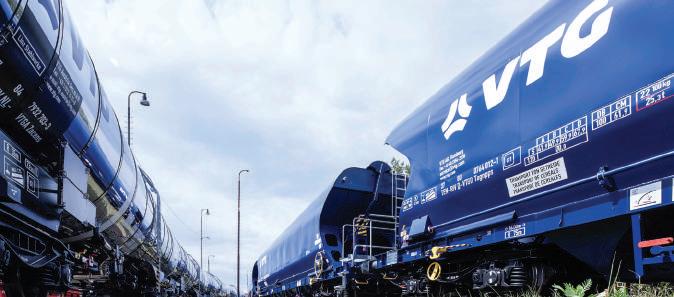
“Den Hartogh continues to invest in modern technology and creative logistics solutions to help fulfil our customers’ needs in an increasingly complex environment,” the company says.
www.denhartogh.com
SUTTONS GOES TO WASTE
Suttons Tankers has appointed Simon Williams as general manager, waste as part of its strategy to grow in the bulk waste transport sector. Suttons says Williams “is an industry expert and brings technical knowledge and commercial experience gained from a long career in all areas of the waste supply chain”.
Michael Cundy, managing director of Suttons Tankers, says: “I am delighted to welcome Simon Williams into the business. With decades of experience in the waste sector he will strengthen our offering to customers. Under his guidance the business will further develop into this sector in line with our
The European Chemical Transport Association (ECTA) has secured funding to help with the development of its mobile phone app for drivers. ECTA’s Driver Shortage Workgroup has pinpointed excessive waiting times and poor facilities at loading and unloading sites as a major factor in reducing the attractiveness of truck driving as a profession, hindering the recruitment and retention of drivers. It suggested developing a system that would make it easy for drivers to report poor conditions, with the aim of improving standards. Drivers will be able to rate each site on the basis of safety, waiting time, driver treatment, driver facilities and total residence time. Work on the ECTA app is now starting. www.ecta.com
VTG BUNDLES BALTICS
VTG Rail Logistics has strengthened its presence in the Baltic region, taking what was formerly VTG Project Logistics and adding a complete portfolio of rail transport services under a new company, VTG Rail Logistics Baltics, with Violeta Vlasoviene appointed managing director.
Integrating the new company, headquartered in Lithuania, into VTG’s existing panEuropean network will, the company says, enable it to optimise and harmonise its national and cross-border leasing and rail logistics activities in the Baltic region.
“VTG boasts exceptional expertise in rail transport and multimodal logistics, offering a full spectrum of services across the entire transport chain,” says Paweł Solich, head of
22 HCB MONTHLY | FEBRUARY 2023
TANKS & LOGISTICS
Region North-East at VTG Rail Europe.
“Our r2L solution (‘roadrailLink’) increases the proportion of craneable semitrailers from 5 to 95%. Even trailers carrying refrigerated goods, liquids and fuels can make use of this innovation.”
“The ongoing Rail Baltica corridor project will connect five EU countries – Poland, Lithuania, Latvia, Estonia and, indirectly, Finland,” Vlasoviene notes. “This will provide VTG with exciting new market opportunities. Having our own office on the ground is going to help us respond even better to the needs of our customers in this highly promising market environment.”
www.vtg.com
LESHACO BUYS IN COLOMBIA
Leschaco has acquired Coltrans SAS, which has been part of its agent network for more than 30 years and has a leading position in the Colombian logistics market. It provides global logistics services including import and export services for different transport modes, as well as customs clearance, warehousing and intermodal transport. Coltrans is headquartered Bogotá with eight offices around the country and some 500 employees.
“The entry into the Colombian market and the acquisition of the Coltrans product portfolio are an excellent strategic addition to Leschaco’s existing global network. Our local and international customers will benefit from this,” says Martin Sack, regional head Americas at Leschaco.
Constantin Conrad, managing partner of the Leschaco Group, adds: “We are very pleased to welcome our new Colombian colleagues and customers. The acquisition fits ideally into our already existing network and has a high strategic importance for us. It strengthens our business activities in one of the most attractive economies in Latin America.”
www.leschaco.com
VDB LOSES WEIGHT
Van Den Bosch has been continuing in its quest to maximise loading weights, following the introduction of the 35,500-litre ultra-light high volume swap body tank container last year. It has now introduced an ultra-light chassis, developed initially for those European countries that legislate for a maximum axle load of 3 x 9 tonnes; this includes the Netherlands, Belgium, Germany and France.
“Thanks to the further development of the associated ultra-light chassis, an optimal payload can now also be achieved in countries where different legislation is applied regarding axle loads and distances,” explains Emiel van Haren, operations director of Van den Bosch’s liquid bulk division.
The new chassis also allows a payload of 30 tonnes in countries that have a maximum axle load of 3 x 8 tonnes, including Spain, Sweden, the UK and Hungary.
“Efficiency in logistics not only increases convenience but also sustainability within the supply chain,” van Haren adds. “By optimising the payload, fewer runs are required to transport the same amount of freight. This results in a reduction of CO2 emissions. Thanks to the new ultra-light chassis, the next step is being taken in terms of sustainability.”
www.vandenbosch.com
H&P STILL GOING STRONG
H&P Freightways stresses that, contrary to market rumours, it and its sister operation Tankclean are continuing to grow and thrive as an independently owned company. “Careful planning and management of the operations during 2022 was key to us keeping all employees in work and not facing any redundancy situations,” the company says. “Further investment in property, vehicles and people are ongoing and this allows us to offer more capacity to customers.”

H&P Freightways, based in Hull, UK, operates a fleet of nearly 100 vehicles and Tankclean operates four tank cleaning stations, making it the largest tank container haulier and cleaning station operator in the UK. In addition, having a board of directors who are each operational within the company allows decisions to be made quickly and gives the ability to respond rapidly to customer needs.
“Our recent investments have allowed us to increase tank storage capacity in Hull and we have no less than 15 new Renault T-Range tractor units joining the fleet this year,” the company adds. “We have also purchased new Kalmar container lifters for the Hull and Teesside depots to ensure reliable service is provided to customers.
“The future of H&P Freightways/Tankclean is very positive and, very much, as an independent company.”
www.hpfreightways.co.uk
TANKS & LOGISTICS 23
WWW.HCBLIVE.COM
GOING FOR GROWTH
PRODUCTION • IT HAS BEEN A BUSY FEW MONTHS FOR SCHÜTZ, WITH ACQUISITIONS AND EXPANSIONS, AS WELL AS NEW PRODUCTS ON DISPLAY AT RECENT PACKAGING TRADE SHOWS
SCHÜTZ CONTAINER SYSTEMS has agreed to acquire Remi Tack, a Belgium-based reconditioner of composite IBCs and plastics drums that has been a long-time collaborator with Schütz. Family-run Remi Tack was founded in 1999 and, Schütz says, is one of the leading reconditioning companies in the Benelux region.
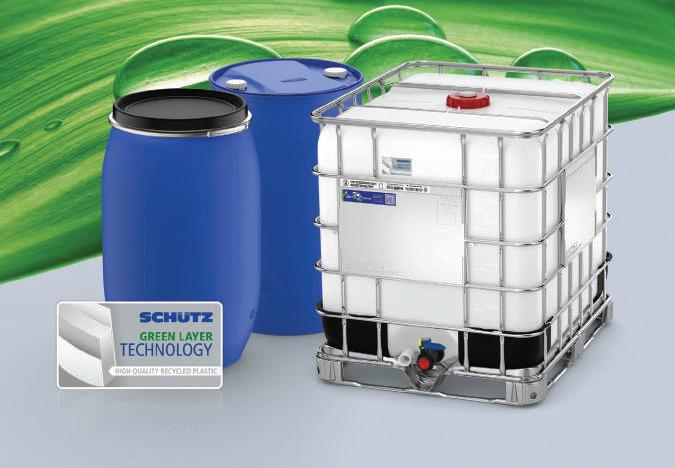
“We are grateful for the confidence and faith placed in us by the owner Tom Tack and his management team,” says Roland Strassburger, Schütz CEO. “The acquisition enables us to expand the portfolio of services for our customers in the Benelux region. This move sees us moving even closer to our customers and, together with the Remi Tack team, we are further strengthening our commitment to a sustainable circular economy.”
Schütz says the deal will support the development of the circular economy in the region to further drive sustainability and continuous improvement in the service levels for its customers.
Tom Tack, owner of Remi Tack, says: “From our many years of working together as partners, we know that Remi Tack is in excellent hands with Schütz. The philosophies of our two family businesses are a perfect match. We know that Schütz will use its significant innovative strength to drive the further development of our industrial packaging product range and offer an even wider range of reprocessing and recycling services.“
NEW SITES, NEW LINES
Schütz has also been adding to its production capacity around the world, most recently beginning production of open-head steel
drums at its factory in Pasadena, Texas. The site opened in 2016, when it was the first new steel drum plant in the US for more than 20 years, and since then has concentrated on production of tight-head steel drums in various material thicknesses.
Addition of open-head drums to its portfolio in Texas will, Schütz says, allow local customers to benefit from a fully comprehensive range of new and reconditioned intermediate bulk containers (IBCs) and plastics and steel drums.
Towards the end of last year, Schütz opened a new production facility in Spain. The 9,000-m2 Cazalegas plant, some 100 km from Madrid, will be used to produce a range of IBC models, including the eco-friendly Green Layer
range. It also houses a high-tech reconditioning line for the recycling of used containers.
“The new plant allows us to further increase supply security and ensure the comprehensive availability of our packaging,” the company states. “For the delivery of new containers and the collection of emptied IBCs, being close to our customers facilitates short transport routes and fast response times.”
The Cazalegas plant will supply much of the Iberian peninsula, including Portugal, with the existing Schütz Ibérica site in Vila-Seca near Tarragona continuing to supply the chemical industry in Catalonia.
In the UK Schütz has installed an additional multi-layer extrusion blow-moulder at its Worksop plant to expand production capacity for IBC inner bottles and allow the production of Green Layer plastics drums and IBCs, which include a high content of recycled material.
The new blow-moulder was built in compliance with the latest technical standards at Schütz’s global competence centre in Selters, Germany. It will increase the level of automation and provide maximum reliability on the production line while also raising quality control, the company says.
www.schuetz.net
HCB MONTHLY | FEBRUARY 2023
24
ION BREW
PLASTICS • ORBIS HAS STRENGTHENED ITS PRESENCE IN EUROPE AND CONTINUED WITH THE DEVELOPMENT OF INNOVATIVE, REUSABLE RIGID PLASTICS PACKAGING FOR SELECTED INDUSTRIES
ORBIS, A WISCONSIN-based international manufacturer of reusable plastics packaging, reports that it has maintained its growth in Europe during the economically challenging year just gone. “We have developed our customer base as well as our organisation,” says Jürgen Krahé, senior commercial director EMEA at Orbis. “Through regular collaboration with our customers and partners, also at events such as FachPack and The Battery Show, we continue to focus on customer needs. That helps us optimise our product portfolio with the customer in mind.”
Orbis Europe, established in 2016, represents Orbis Corp in the EMEA region from its headquarters in Hürth, Germany. Its
growth is already continuing in 2023, with the opening of a new production and distribution centre, as well as office space, in Ieper, Belgium. The 2,300-m2 clean area is being used for sensitive and complex packaging solutions, such as those being developed for the transport of lithium batteries and other equipment for the automotive industry. The design of the factory space inhibits contamination during packaging assembly and storage.
As an example of the sort of packagings Orbis is providing, last year it extended its dangerous goods packaging offering with the IonPak® range of foldable packagings, aimed in particular at the automotive market.
UN-approved for solid dangerous goods (4H2 and 50H) and with a gross load capacity of up to 915 kg, the packagings were designed primarily as a reusable unit for the safe transport of lithium ion batteries, although they are also suitable for use with other batteries and regulated automotive parts such as air bags, seat belt tensioners and others that require UN-certified packaging.
WHERE TO NEXT
One of the goals for Orbis in 2023 is to introduce proven products to other geographical and vertical markets. Customerspecific packaging solutions are currently in prototyping phase. “We already cover the rising demand for sustainable transport packaging with our existing product portfolio. Additionally, we are working on increasing the percentage of recycled material in our products and evaluating alternative materials,” says Krahé. “In that way, our customers continuously benefit from our sustainable, innovative product portfolio and expertise.”
That approach to sustainability extends throughout the Orbis range and, With a durable and supply chain optimised product design, Orbis’ customised and standard solutions help streamline product flow sustainably along the supply chain. The plastic foldable large containers (FLCs), pallets and small load carriers are 100 per cent recyclable.

Menasha Corporation, owner of Orbis Corp, is one of the oldest family-owned manufacturing companies in the US, having been in operation since 1849, and is very strongly focused on sustainability. Menasha’s latest Corporate Social Responsibility Report notes that the corporation reduced its greenhouse gas emissions by 3.2 per cent per tonne of output between 2020 and 2021 and has also reduced its water consumption per tonne of output by 90 per cent since 2010. The European market can see more of Orbis’ products at upcoming events, including LogiMAT (25 to 27 April) and the Battery Show Europe (23 to 25 May), both in Stuttgart, Germany.
orbiseurope.eu
WWW.HCBLIVE.COM INDUSTRIAL PACKAGING 25
biomedical, pharmaceutical, veterinary, petrochemical, and food and drink industries.
GET IT TOGETHER
THE UN PACKAGING standards provide a comprehensive and very strict set of requirements for the design and use of all types of packagings used in the transport of dangerous goods. All designs must be tested and must be tested in the form in which they will be used. For combination packagings, for instance, that means that they are tested with all elements of the complete package in the correct arrangement and with the outer packaging properly closed.
Packaging manufacturers are responsible for having their products properly tested and also for passing on to users the instructions for the proper assembly and use of those packagings. Those instructions have typically been provided on a sheet of paper sent along with the packaging to the user but, as we all know, those sheets can be lost along the way and, given modern digital technology, better ways are being found.
Dangerous goods packaging supplier Air Sea Containers, for instance, has introduced QR codes on its newly branded packaging. When scanned, these codes provide shippers with direct access to a comprehensive set of assembly instructions to help them assemble the packaging compliantly during the packing process. The new QR codes form part of a redesign of Air Sea Containers’ fibreboard packagings, which produce a cleaner look and give more space for labels and marks.
Laurence Richards, product manager at Air Sea Containers, comments: “We are passionate about our contribution to the safe shipment of dangerous goods. Our packaging is manufactured to the highest standards and is compliant with air, sea and road
regulations. However, correct assembly is fundamental to its performance. UN packaging must be assembled in accordance with the manufacturer’s assembly instructions - use in any other way will render it invalid. To ensure this vital information is to hand when the packaging is assembled, we have introduced QR codes on the packaging itself; the shipper simply scans the QR code and follows the assembly instructions, enabling the packaging to be correctly assembled.”
HOW TO DO IT
The new QR codes provide step-by-step assembly instructions, assembly videos, information on package contents and weight restrictions, FAQs and more. This information aims to simplify the packing process for those organisations across a variety of industries who use Air Sea Containers’ UN packaging to ship dangerous goods, including those in the

The use of electronic assembly instructions does not affect the packaging’s test certificates, as the specification of the packaging itself has not been altered and performs to the same standards as those in has replaced. The removal of paper instructions reduces waste and eliminates the risk of paper assembly sheets being misplaced and not reaching the end user responsible for assembling the packaging compliantly. The QR code placement means the person assembling the packaging will always have the instructions to hand.
Air Sea Containers stresses that it is the shipper’s responsibility to ensure that they pack their substances and articles correctly within the packaging, exactly as per the assembly sheet instructions, to ensure the chosen packaging performs to the standard it did during approval testing. If a shipper fails to follow the assembly instructions, they risk invalidating the test certificate and compromising the capability of the packaging.
Air Sea Containers’ range of 4GV, 4G, 4DV and Division 6.2 packaging all include the new QR codes, which are also included on non-UN packaging such as the Temperature Control range, which can be used to ship items requiring a temperature-controlled environment, as well as dangerous goods when consigned in an overpack.
www.airseadg.com
HCB MONTHLY | FEBRUARY 2023
26
ASSEMBLY • IT IS UP TO THE USER TO ENSURE THAT A PACKAGE IS ASSEMBLED CORRECTLY; AIR SEA CONTAINERS IS LEVERAGING TECHNOLOGY TO PROVIDE THE INFORMATION THEY NEED TO DO SO
NEWS BULLETIN
INDUSTRIAL PACKAGING
plastic bottle footprint and adds a further growth engine to our GIP business. I am excited to welcome our new colleagues to the Greif family and look forward to growing our business together with them.
“Lee is a premiere organisation and fits perfectly within the strategic parameters of our repeatable M&A playbook,” Rosgaard adds. “We foresee abundant opportunities to continue growing Lee organically as well as seeking add-on acquisitions to further broaden our footprint in jerrycans and small plastics.” www.greif.com
REBRAND FOR RECOVERY
Mauser Packaging Solutions has rebranded its international packaging collection programme as ‘Recover Syst-M’. Mauser has been collecting empty industrial packaging from users around the world for more than 50 years. It says the new name and logo “capture the essence of the programme while emphasising its key strengths – giving IBCs and drums a second life and diverting waste from landfills”.
“Every year, Mauser Packaging Solutions gives tens of millions of used IBCs and plastic and steel drums around the world a new life. Having a brand name that represents this programme unites us all around our common goal of extending the life cycle of packaging and supporting the circular economy,” says Mark Burgess, CEO of Mauser Packaging Solutions.
On the product development front, Mauser has introduced a new line of all-plastics stackable IBCs, designed as a highly durable and reusable packaging for use with industrial chemicals, agrochemicals, acids and water treatment products. The UN-rated IBC is available in 275 gal (1,000 litre) and 330 gal (1,135 litre) sizes and offers some user-friendly features, including volume indicators moulded in the sidewall, a sloping floor to drain as much product as possible, and an enlarged doghouse to give easy access to the bottom discharge
valve. The IBCs can be collected through the Recover Syst-M programme.
Mauser has also launched a new line of plastics containers for use in the automotive sector for lubricants, engine oils, brake fluids and coolants, as well as the chemical industry. The new Envision series is available in 1-, 4- and 5-litre sizes, with an ergonomic design for east of handling and smooth pouring. Mauser adds that the bottles can be manufactured with recycled plastics for reduced environmental impact. mauserpackaging.com
GREIF GOBBLES LEE
Greif has acquired Lee Container Corp, a leading North American producer of blowmoulded jerrycans serving the agrochemical, chemical, lubricants and pet care sectors, in a deal valuing Lee at some $300m. Lee Container has three production facilities in Georgia, Indiana and Texas and in the year to end September 2022 generated sales of $162m and adjusted EBITDA of $33m.
“The acquisition of Lee Container is a critical step in our continued ‘Build to Last’ journey,” says Ole Rosgaard, Greif’s president/CEO.
“Lee is an exceptional strategic and cultural fit, with exceptional people and values as well as a favourable mix of product and end market exposures. The Lee acquisition solidifies our commitment to growing our jerrycan and small
CURTEC OPENS ABROAD
CurTec expects to open its new plant in the US, its first outside Europe, in the second quarter of this year. Work on the site (left) at Westminster, South Carolina started with groundbreaking at the end of June 2022 and proceeded rapidly so that the external walls were all in place by the end of the year. New machinery is arriving from Austria and will be installed with all the other interior areas, with scheduled completion in April.
The new site is part of the Oconee Industrial & Technology Park, mid-way between Atlanta and Charlotte and strategically located for convenient access to customers, suppliers, transport links and a potential workforce. CurTec says it will act as its main production facility to serve customers in North America and, in addition to its initial 3,000 m2 footprint, has plenty of room for expansion.
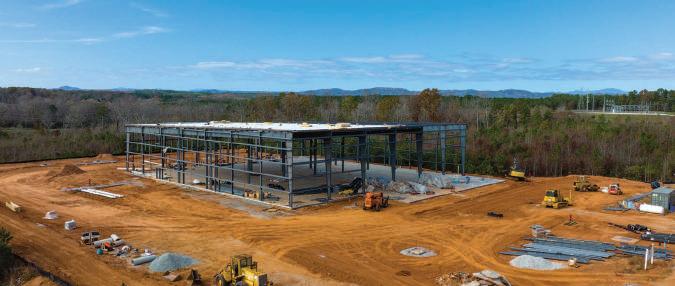
“Over the past years, we have seen a strong increase in demand for high performance packaging by pharmaceutical, specialty chemicals and food ingredients customers in North America,” notes Bart van Berkel, CurTec CEO. “By starting manufacturing in the US, CurTec is taking the next step in strengthening our market position, increasing our service level to new and existing customers and decreasing the carbon footprint of operations.”
www.curtec.com
INDUSTRIAL PACKAGING 27
WWW.HCBLIVE.COM
EMIRATES TO AMSTERDAM
HYDROGEN • ABU DHABI-BASED MASDAR IS LOOKING TO AMSTERDAM AS A LIKELY LANDING POINT FOR A GREEN HYDROGEN SUPPLY CHAIN FROM THE MIDDLE EAST TO NORTHERN EUROPE
MASDAR, ONE OF the world’s leading clean energy companies, has signed a memorandum of understanding (MoU) with Port of Amsterdam, SkyNRG, Evos Amsterdam and Zenith Energy to explore the development of a green hydrogen supply chain between Abu Dhabi and Amsterdam. It is envisaged that the energy imported into Amsterdam will be used to support Dutch and European markets for sustainable aviation fuel (SAF), shipping fuel and other offtake opportunities.

Speaking about the MoU, HE Dr Sultan Ahmed Al Jaber, the UAE’s Minister of Industry and Advanced Technology and chairman of Masdar, said: “This agreement builds upon the existing relationship between the UAE and the Netherlands and demonstrates our mutual commitment to exploring low- and zero-carbon energy
solutions. The UAE aims to play a central role in the emerging green hydrogen economy and this partnership with the Port of Amsterdam and associated players in the green hydrogen space would help position Abu Dhabi as a key hub for green hydrogen development.”
The projected green hydrogen supply chain will focus on production in Abu Dhabi and export to the Netherlands through the Port of Amsterdam; a number of hydrogen transport methods, including liquid organic hydrogen carriers (LOHCs) and liquefied hydrogen, will be explored.
“The Netherlands is keen on developing green hydrogen corridors with major future exporting countries like the UAE,” comments Wopke Hoekstra, Minister of Foreign Affairs for the Netherlands. “Our country is well positioned to become a hydrogen hub for the
north-western European market. I welcome the collaboration between Dutch and UAE businesses in the field of hydrogen and look forward to further intensifying the cooperation between our two countries.”
ROLES TO PLAY
“Masdar believes green hydrogen to be a promising energy source for hard-to-abate sectors in support of global decarbonisation, which is why we launched our dedicated green hydrogen business [in December 2022],” says Mohammed Jameel Al Ramahi, CEO of Masdar. “We are pleased to partner with Port of Amsterdam, SkyNRG, Evos Amsterdam, and Zenith Energy to leverage our synergies in the fuel and logistics sectors to see how green hydrogen can help us achieve our shared goals for decarbonisation and sustainable economic growth.”
Port of Amsterdam is committed to scaling up its green hydrogen capabilities and is working closely with commercial parties. In this project, SkyNRG is developing a network of SAF project facilities that will require green hydrogen as an input; Zenith Energy and Evos Amsterdam both operate storage and blending terminals in the port and are already looking at hydrogen supply chains.
“SkyNRG, Evos and Zenith Energy are driving forces behind the hydrogen developments in the port of Amsterdam and they are key in our goal of importing at least one million tonnes of green hydrogen annually,” says Koen Overtoom, CEO of Port of Amsterdam. “Joining forces with a party as renowned as Masdar will bring this goal that much closer to realisation. Together, we can bring the envisioned Abu Dhabi-Amsterdam connection to fruition.”
Masdar, the Abu Dhabi Future Energy Company, was formed in 2006 and is now jointly owned by the Abu Dhabi National Oil Company (Adnoc), Abu Dhabi National Energy Company (TAQA) and Mubadala Investment. It is targeting a renewable energy portfolio of at least 100 GW and annual green hydrogen production capacity of up to 1m tonnes by 2030.
masdar.ae
www.portofamsterdam.com
28
HCB MONTHLY | FEBRUARY 2023
UNCOMMON CARRIER
“We believe that different types of hydrogen logistics need to be developed to be able to facilitate the needed future flows of hydrogen and hydrogen carriers. We are excited to work together with Hydrogenious to jointly develop the first industrial scale hydrogen supply chain using LOHC.”
Dr Daniel Teichmann, founder and CEO of Hydrogenious LOHC, explains more:
VOPAK, THE LEADING independent tank storage provider, has been alert to the coming changes in the energy market for some time; it knows that it will have to change its business model if it is to continue to prosper in a future world without hydrocarbons. Its strategy now is focused on new energies, gases and chemicals and, as part of that, in 2019 it invested in Hydrogenious LOHC, which has been developing plans to use a liquid organic hydrogen carrier (LOHC) as a way to move hydrogen easily in bulk.
That partnership has now been further cemented with plans to form a 50/50 joint venture, LOHC Logistix, to look into the development of an infrastructure for the storage, transport and supply of hydrogen. It will use the LOHC technology developed by Hydrogenious, which uses thermal oil benzyl toluene, an established heat transfer medium that can be safely handled in ports. Due to its characteristics as a flame retardant and
non-explosive carrier with a high volumetric energy density, benzyl toluene can be handled like a fossil liquid fuel within existing infrastructure, tankers and vehicles at ambient pressure and temperature, making it a natural fit with current port infrastructure and fleets of vessels, rail cars and road tankers.
The two partners has also committed to accelerating the construction of a planned LOHC storage facility at Chempark Dormagen, which was announced in 2021, as well as a dehydrogenation plant in Rotterdam that will be able to release 1.5 tonnes of hydrogen per day in its first phase. The dehydrogenated LOHC can then be returned for re-use.
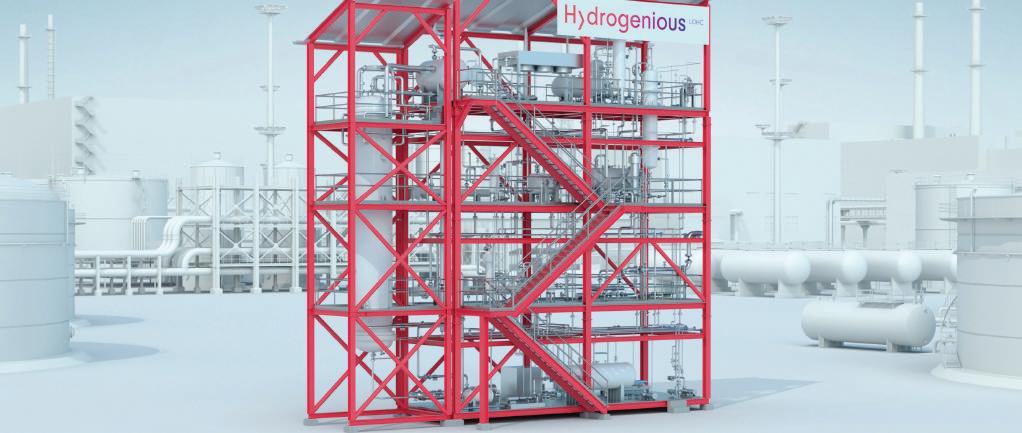
MAKING A STATEMENT
“This investment is well in line with Vopak’s strategy to accelerate its portfolio investments towards new energies and sustainable feedstocks,” says Dick Richelle, CEO of Vopak.
“Worldwide there exists a huge capacity of storage tanks, sea vessels, inland tankers and tank trucks for the storage and transportation of liquid fossil fuels. Hydrogenious wants to turn all this valuable infrastructure into the hydrogen infrastructure of the future using our LOHC technology. Ever since Vopak’s investment in our company we have worked very closely together in developing and establishing clean hydrogen value chains.
“With the build-up of LOHC plants in Chempark Dormagen and Rotterdam we will establish a green hydrogen supply chain that we see as a blueprint for a future even more comprehensive network across Europe and the Middle East and beyond,” Dr Teichmann adds.
“As a great start into the new year, we are proud to announce this new partnership with Vopak and the foundation of our Joint Venture. As a team we work together to further accelerate the establishment of a clean hydrogen infrastructure in order to ‘carry the new energy world’, as our corporate claim says.”
www.hydrogenious.net
www.vopak.com
WWW.HCBLIVE.COM
LOHC • INNOVATION WILL BE NEEDED IF EUROPE IS TO BE ABLE TO IMPORT HYDROGEN IN THE VOLUMES REQUIRED TO MEET EMISSIONS REDUCTIONS TARGETS. VOPAK IS ALREADY ON THE CASE
NEW ENERGIES 29
BIO-BONANZA
VARO ENERGY GROUP has taken an 80 per cent stake in Bio Energy Coevorden (BEC) in the Netherlands, which operates one of the largest biogas producers in Europe. Existing shareholders STAK Grisbe and Van Drie Group will continue with minority holdings. Varo says the investment accelerates its ‘One Varo Transformation’ strategy launched in July 2022, as part of which the company committed to becoming a leading producer of biogas in Europe, building its portfolio through both acquisition and greenfield developments.
“The combination of this platform along with Varo’s integrated business model will not only contribute to our strategic growth but will
also be highly value accretive to Varo,” says Dev Sanyal, CEO of Varo. “Large scale biogas facilities have an important role in accelerating Europe’s energy transition – offering an alternative to conventional fuels at scale with emissions 90 per cent lower than natural gas as well as allowing our refineries to replace their natural gas consumption with biomethane products with a lower carbon intensity. Growth in biogas will further support Europe’s energy security by diversifying supply.”
Varo Energy and BEC’s other shareholders now plan to press ahead with expansion plans; current capacity of 300 GWh will be more than doubled to 650 GWh by 2026, making BEC well
placed to help meet expected European demand growth for both bio-methane and bio-LNG.
ROLE IN THE TRANSFORMATION
Biogas has an important role to play in providing customers in harder–to-abate sectors, such as heavy-duty transport and shipping, with a cost-competitive and low-carbon fuel supply. It also plays an important role in the decarbonisation of the agricultural sector and contributes to a circular economy, by using agricultural waste – manure and other organic material –as a feedstock in specially built anaerobic digesters and waste facilities. The biogas produced and collected in this process would otherwise have been flared or vented but can now be further processed into bio-methane or bio-LNG, which are both functionally identical to natural gas and LNG from traditional sources and can be used in the same way without the need for any adaptation of equipment.
Europe is an attractive market for biogas, Varo says, as it benefits from high domestic feedstock availability as well as supportive government policies and incentive structures. BEC’s established sourcing channels and world-class biogas production and construction expertise, combined with Varo’s existing feedstock sourcing, operations and trading capabilities, create a strong platform to scale the biofuels business across Europe.
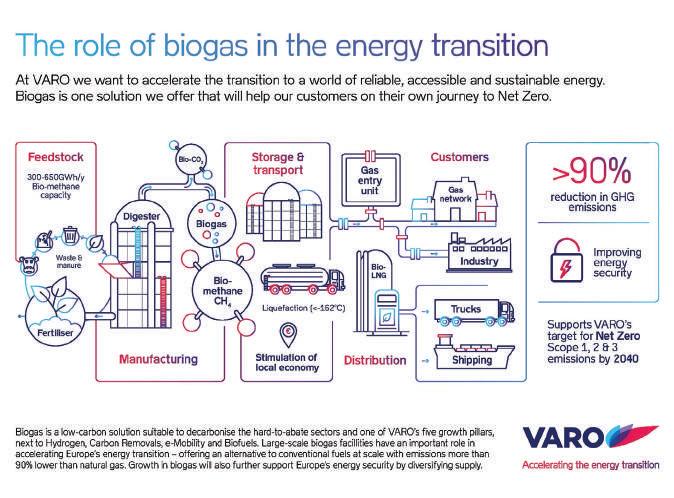
Christian Cuenot, vice-president of biogas at Varo, who joined the company from a similar role at Shell in December, says of the deal: “This transaction brings Varo closer to realising its target of 1 TWh/y of biogas production by 2026. It creates the largest biogas manufacturing facility in northern Europe, located at the heart of one of the most concentrated industrial centres in the world offering easy access to high demand growth. Abundant feedstock from agricultural waste in the region also provides a resilient and sustainable supply to the facility. I am looking forward to working with our new partners to deliver on the expansion of the current platform plant and continue to grow Varo’s biogas business.”
www.varoenergy.com
BIOGAS • BIG THINGS ARE EXPECTED OF BIO-METHANE AND BIOLNG AS DECARBONISATION GETS GOING. VARO IS READY TO TAKE A MAJOR ROLE IN THAT PROCESS WITH ITS INVESTMENT IN BEC
HCB MONTHLY | FEBRUARY 2023
30
GRAB AND GO
CARBON CAPTURE • BUILDING A CCS VALUE CHAIN FROM SCRATCH WILL TAKE A LOT OF DIFFERENT SKILLS AND RANGE OF EXPERTISE. MISC HAS STARTED WORK AS PART OF A FOURSTRONG TEAM

vessels, having pioneered many new technologies along the way; and Andritz, an Austria-based international technology group, brings a broad portfolio of innovative plants, equipment, systems, service and digital solutions (below) for a wide range of industries and end markets.
ALL PULLING TOGETHER
MISC GROUP HAS signed respective memoranda of understanding (MoUs) with Mitsui & Co, Samsung Heavy Industries (SHI) and Andritz to explore opportunities in carbon capture and storage (CCS) solutions in the maritime value chain, including the identification of storage hubs, development of floating solutions and carbon capture parts and equipment.
Explaining the move, MISC president/CEO, Capt Rajalingam Subramaniam says: “Carbon capture and storage technologies, as well as related infrastructure, are pivotal measures to support and accelerate the transition towards a low-carbon future. Strategic collaborations with global stakeholders have always been our approach, and we will continue forging partnerships in the development and
commercialisation of the carbon capture and storage value chain. The MoUs reflect MISC’s ambition to define our role in a future that is being shaped by the energy transition and we are pleased to explore opportunities in this new venture with our partners.”
Those partners bring a range of expertise and experience of value in the CCS sphere. Mitsui & Co is a global trading and investment company that, in recent years, has diversified beyond its core profit pillars to encompass emerging areas, including innovative energy solutions, with a focus on the high-growth Asian markets; SHI has developed marketleading expertise in the high-tech shipbuilding sectors and is the leading builder of LNG carriers, floating LNG units and floating production, storage and offloading (FPSO)
MISC says its collective group expertise in energy shipping, maritime and port management, offshore engineering and fabrication places it in a viable position to develop and play an important role in the CCS value chain. However, as is increasingly being realised across projects in the energy transition space, collaboration is needed if new solutions are to be developed and delivered effectively. Any CCS value chain will need to start with capturing and liquefying carbon dioxide produced through industrial activities; storing and transporting that captured gas; and either shipping it to a sequestration point, quite likely offshore, or moving it to another location ashore where it can be used in another industrial process.
In this initiative, for instance, Mitsui & Co will collaborate with MISC on business opportunities across the CCS value chain, including the identification of potential CCS hubs and the assessment of the commercial and technical viability of CCS solutions. The partnership with SHI will cover the joint development of the floating carbon dioxide solutions to facilitate and support the optimisation of offshore CCS projects, and the cooperation with Andritz covers the application and optimisation of carbon capture technologies and the engineering, procurement, construction, installation and commissioning of CCS systems for marine and land-based applications.
MISC says this foray into the CCS value chain puts it in a firm position to delivery the long-term strategy ‘MISC 2050’, which focuses on identifying new business opportunities while driving value for its stakeholders.
www.andritz.com
www.misc.com.my
www.mitsui.com
www.samsunghi.com
WWW.HCBLIVE.COM NEW ENERGIES 31
HYBRID EVENT: FRISCO, TX

Prominent Speakers . Training Sessions
Industry Roundtables . Expo Showcase Register



MEETING TOPICS:
• IVODGA



• NAAHAC
• Air Carrier Roundtable (ACRT)



• International Regulatory Briefing
• BMP: Third Parties

• North American Briefing
• Lithium Batteries
• New Technology in the Distribution Supply Chain










• DG Supply Chain Logistics Transportation Panel

• Modal Briefing
• Regulatory Process
• Enhancing the Image of the HazMat Professional (EIHMP)



• BMP: Awareness of Hazardous Materials Within a Company









• Mexican NOMS

• Safety Data Sheets (SDS)


TRAINING TOPICS:
• Lithium Batteries
• Packaging
• Advanced Air DG
• IMDG Code

• USPS Publication 52

• TDGR Canada
• 49 CFR

The Council on Safe Transportation of Hazardous Articles (COSTHA) 1.518.761.0389 . mail@costha.com
COSTHA 2023 ANNUAL FORUM & EXPO
• ADR • eCommerce
REUNITE. REENGAGE. RECONNECT. . . . PLATINUM SPONSORS . . . Official Media Sponsor 2023 April 30 - May 24
15 & Save $125 at costha.com
Before March
CONFERENCE DIARY
FEBRUARY
Argus Clean Ammonia Middle East
FEBRUARY 14-16, ABU DHABI
Conference for pioneers in the new energy sector www.argusmedia.com/en/conferences-eventslisting/clean-ammonia-middle-east
Hydrogen Safety & Hazardous Areas Conference

FEBRUARY 22-23, BRISBANE
Conference on emerging technologies and equipment in hazardous areas https://events.idc-online.com/upcomingconferences/hydrogen-safety-hazardous-areas
Internationale Gefahrgut-Tage Hamburg 2023
FEBRUARY 27-28, HAMBURG
38th annual conference on dangerous goods transport (German language) www.ecomed-storck.de/Veranstaltungen/
International Energy Week
FEBRUARY 28-MARCH 2, VIRTUAL/LONDON
Annual week of meetings, conferences and seminars (formerly ‘IP Week’) www.ieweek.co.uk
Intermodal South America
FEBRUARY 28-MARCH 2, SÃO PAULO
27th annual international exhibition on intermodal logistics, cargo transport and international trade www.intermodal.com.br/en
MARCH
Battery Recycling Europe
MARCH 1-2, LONDON
Conference for the battery recycling and manufacturing sectors
www.wplgroup.com/aci/event/battery-recyclingeurope/
Hazardex 2023
MARCH 1-2, HARROGATE
Conference and exhibition on hazardous area operations and personal protective technology www.hazardex-event.co.uk/
PPC Spring Meeting
MARCH 5-7, SAVANNAH
Bi-annual meeting and tradeshow of the Petroleum Packaging Council www.ppcouncil.org/upcoming-meetings.php
Hydrogen & Fuel Cells Energy Summit
MARCH 8-9, LISBON
6th annual conference to discuss innovations in hydrogen and fuel cell technology, production and transport www.wplgroup.com/aci/event/hydrogen-fuel-cellsenergy-summit/
BADGP
MARCH 9, COVENTRY
Annual AGM and seminar of the British Association of Dangerous Goods Professionals www.badgp.org/event-4997298
ChemCon The Americas 2023
MARCH 13-17, SAN FRANCISCO
Global conference on chemical regulation https://chemcon.net
NACD Regulatory Workshop
MARCH 14, ARLINGTON, VA
Meeting on compliance issues for North American chemical distributors www.nacd.com/education-meetings/meetings/ regulatory-workshops/
LogiChem
MARCH 14-16, ROTTERDAM
Chemical supply chain and logistics conference http://logichem.wbresearch.com/
FETSA Annual Conference
MARCH 14-16, ROTTERDAM
Annual conference and AGM of the Federation of European Tank Storage Associations https://fetsa.eu/annual-conference/
StocExpo 2023
MARCH 14-16, ROTTERDAM
The main annual exhibition and conference for the European tank terminal industry www.stocexpo.com/en/
AFPM Annual Meeting
MARCH 19-21, SAN ANTONIO
AFPM’s annual meeting for refiners and marketers www.afpm.org/events/2f65b000000026
World Petrochemical Conference
MARCH 20-24, HOUSTON
WPC 2023 provides an outlook on petrochemical supply chain, feedstocks, sustainability and more wpc.ihsmarkit.com/index.html?/summary
AFPM IPC
MARCH 26-28, SAN ANTONIO
AFPM’s annual International Petrochemical Conference www.afpm.org/events/3069ec0000011c
International Transport & Logistics Week (SITL)
MARCH 28-30, PARIS
Annual transport event, including hybrid and in-person conferences and workshops www.sitl.eu/en-gb.html
APRIL
NISTM
APRIL 12-14, ORLANDO
National Institute for Storage Tank Management’s 25th annual international aboveground storage tank conference and trade show www.nistm.org
AFPM Security Conference
APRIL 13-14, SAN ANTONIO
Conference on security at fuel refining and petrochemical plants www.afpm.org/events/security
CVSA Workshop
APRIL 23-27, MEMPHIS
Meeting for industry, regulators and enforcers to improve commercial vehicle safety www.cvsa.org/events/cvsa-workshop/
International Chemical & Product Tanker Conference
APRIL 25-26, LONDON
Conference on tanker markets and trade www.rivieramm.com/events/chemical-and-producttanker-conference-2023
COURSES & CONFERENCES 33
WWW.HCBLIVE.COM
INCIDENT LOG
ROAD/RAIL/AIR INCIDENTS
Date Location Vehicle Type Substance Details Source
8/12/22 Bluffdale, road tanker crude oil Car swerved to avoid jack-knifed semi-trailer on I-15, was struck by double tanker with crude oil that was KSL Utah, US going too fast for snowy conditions; some 1,500 gal (5.7 m3) oil spilled from rear trailer after it overturned News
13/12/22 Kannur, road tanker LPG Gas tanker from Mangaluru to Kozhikode overturned in highway widening works; no leak of LPG cargo Times of Kerala, India but some diesel leaked from fuel tank; cargo was transferred to other tankers; driver cited for being drunk India
17/12/22 Salang tunnel, road tanker fuel Road tanker with unspecified fuel exploded while in Salang tunnel, cause not known; at least 31 people AP Afghanistan killed, 30 injured, more may still be buried under rubble; tunnel is the only north-south route open all year
23/12/22 Aba, road tanker diesel Road tanker exploded during delivery to filling station; fire destroyed several properties but no injuries were Vanguard Abia, Nigeria reported; fire chief reminded fuel station owners not to take deliveries in the afternoon during hot weather
24/12/22 Boksburg, Gauteng, road tanker LPG Driver of road tanker with 60 m3 LPG took wrong turn, drove under rail bridge and got trailer stuck; valve Reuters South Africa sheared off, leaking gas that ignited; four explosions followed; at least 41 killed, many in nearby hospital
25/12/22 nr Pirot, freight train ammonia Some 20 tank cars of Serbia Cargo train derailed, at least one falling into river and releasing ammonia; more Novinite Serbia than 50 people needed treatment for ammonia inhalation; state of emergency, shelter-in-place order declared
28/12/22 Palghar, road tanker chemical Road tanker loaded with unidentified chemical caught fire on Mumbai-Ahmedabad highway; driver, cleaner News18 Maharashtra, India jumped to safety and no casualties were reported; significant traffic disruption as fire crews dealt with blaze
5/1/23 Pimlico, truck aerosols B-double truck carrying 6 tonnes aerosol spray cans caught fire on Pacific Highway, causing series of news. NSW, Australia explosions; driver managed to escape; truck completely destroyed; cause yet to be determined com.au
6/1/23 Germiston, Gauteng,road tanker diesel Road tanker with 30,000 litres diesel overturned in Wadeville area, spilling some cargo; reports of locals Sowetan South Africa arriving with buckets to salvage fuel before responders arrived; no casualties reported Live
7/1/23 Johannesburg, road tanker diesel Road tanker ran off N12 onto grass, crashed into overpass wall; driver and passenger both seriously injured; Sowetan South Africa driver facing charges of reckless and negligent driving, as no other vehicles were involved Live
15/1/23 Lagos, road tanker diesel Road tanker with diesel from Apapa to Oshodi overturned while negotiating its way through barriers erected Vanguard Nigeria by toll collectors; one person in cab was killed, another badly injured; rapid response prevented fire
18/1/23 Indian Head, road tanker carbon Emergency crews were called to deal with leak from a Roberts Oxygen truck; found that line had been ripped The Maryland, US dioxide from the tank, shut-off valve damaged; some 6,000 gal (22.7 m3) CO2 vented; nearby properties evacuated BayNet
21/1/23 Panipat, road tanker - Two workers killed, two injured by explosion of road tanker during welding at workshop; tanker said to have Hindustan Haryana, India been in chemical service but evidently still had flammable residues; workshop owner one of those who died Times
22/1/23 Koderma, road tanker LPG Gas tanker, returning empty, crashed head-on into truck on Ranchi-Patna road; cab caught fire, killing driver; Times of Jharkand, India police unable to identify the driver as all paperwork was destroyed in fire India
24/1/23 nr Rockford, road tanker fuel Tank truck with 13,000 gal (49 m3) unspecified fuel ran off US 131 after driver lost control in icy conditions; MLive Michigan, US some 4,000 gal lost; road partly closed for two days during removal of contaminated soil
MARINE/INLAND WATERWAY INCIDENTS
Date Location Vessel Substance Details Source
21/12/22 Kiel Canal, - oil
Pipeline released some 3,200 gal (12 m3) unspecified oil to Brunsbüttel inner harbour, entrance to Kiel Canal; DW Germany canal was closed for a week for cleanup, collection of oiled birds; around 30 ships were blocked from passage
23/12/22 Port Sulphur, tank battery crude oil Some 30 bbl crude oil spilled from WCC Energy tank battery, impacting around 2 miles of adjacent canal USCG Louisiana, US
24/12/22 Ingleside, - crude oil
Some 335 bbl (14,000 gal) crude oil was spilled to water at Ingleside Dock; some was caught by secondary NOAA Texas, US containment, rest discharged into La Quinta Channel
25/12/22 nr Bhola, Sagor fuel Lightering tanker with sme 300,000 gal distillate fuel oil collided with another vessel in dense fog on Meghna Maritime Barishal, BangladeshNandini-2 river; tanker was holed below water line, sank; all crew rescued; spill likely to cause harm to fishing industry Executive
10/1/23 off Rizhao, Hong Pu 6 unknown Tanker (10,500 dwt, 2013), cargo unknown, broke in two after explosion in cargo tanks; 15 crew rescued Safety4 Shandong, China but two missing; several SAR, pollution prevention vessels in attendance Sea
17/1/23 nr Bangkok, Smooth diesel At least five maintenance workers killed by explosion, fire on tanker during welding work at repair yard on FleetMon Thailand Sea 22 Mae Klong River; likely that explosion was caused by ignition of residual vapours from diesel cargo or fuel
34
HCB MONTHLY | FEBRUARY 2023
MISCELLANEOUS INCIDENTS
18/12/22 Verkhnekamskoye, oilfield oil/gas
Five people were injured by explosion, fire at oil and gas condensate field; operators said fire was contained TASS Irkutsk, Russia and incident did not affect other businesses or residential areas
22/12/22 Mohammedia, gas storage propane Explosion and large fire hit propane storage unit, sending balls of flames into the sky; no casualties reported AP Morocco facility but five road tankers at site were destroyed in the blaze; investigation underway
1/1/23 Solapur, fireworks firecrackers At least three people killed, others injured in major fire after explosion in firecracker manufacturing unit; NDTV Maharashtra, India factory no indication as to cause of initial blast
3/1/23 nr Danville, pipeline diesel Colonial Pipeline closed part of its major fuel line after diesel leak following equipment failure at the Witt AP Virginia, US booster station; spill appeared to be contained to the site; other lines not affected
8/1/23 Sangareddy, laboratory chemicals Fire broke out at Mylan Laboratories facility after explosive chemical leaked while being poured into a IANS Telangana, India container; three workers died of injuries; police investigating incident
10/1/23 Khagaria, pipeline petroleum Villagers discovered oil oozing to the surface of maize fields; IOC was informed; emerged that there was a PTI Bihar, India leak in an underground pipeline from Barauni oil refinery; area closed to the public till IOC could investigate
12/1/23 St Roch de l’Achigan,propane propane Explosion at Propane Lafortune facility levelled building; fire broke out but responders concerned by Global Quebec, Canada distributor possibility of further blasts; three workers missing; police investigating cause, though sabotage ruled out News
12/1/23 La Salle, chemical chemicals Major fire broke out at Carus Chemical plant, which produces potassium permanganate, after reported Chicago Illinois, US plant explosions; nearby residents advised to shelter-in-place; all company personnel accounted for Sun Times
13/1/23 Pasvalys, pipeline natural gas Explosion after rupture on Amber Grid gas pipeline in northern Lithuania; no immediate risk to property; Lrt.lt Lithuania resulting fire burned for four hours till gas was exhausted; no injuries reported
15/1/23 Panjin, chemical fuel Powerful explosion caused significant damage at Panjin Haoye Chemical Co plant; blast happened during RT Liaoning, China plant maintenance on alkylation unit; several workers injured; part of plant reduced to rubble
unravels the mystery
SAFETY 35
Date Location Plant type Substance Details Source
we know chemical management can feel like this
AT
Built around an ecosystem of shared knowledge from every industry and every step of the supply chain, SciveraLens delivers on-demand certified toxicological information through an intuitive user interface ® that lets you save time and money while taking a proactive approach to your chemical management TAKE CONTROL OF YOUR CHEMICAL MANAGEMENT. SCHEDULE
A DEMO
SCIVERA.COM.
PART OF THE PROGRAMME
MAR-ICE was developed as a logical and dedicated extension of the ‘Intervention in Chemical transport Emergencies’ (ICE) programme, set up by Cefic to help meet its members’ commitment to Responsible Care. Within that commitment, the chemical industry makes every effort to transport goods to and from its manufacturing sites and storage locations safely and in full compliance with relevant regulations and codes of practice. In the event of an incident, the chemical industry will provide information, practical help and, if necessary and possible, appropriate equipment to the competent emergency authorities in order to minimise any adverse effects.
CHEMICALS ON ICE
THE EUROPEAN MARITIME Safety Agency (EMSA), the European Chemical Industry Council (Cefic) and the Centre for Documentation, Research and Experimentation on Accidental Water Pollution (Cedre) have renewed and revised their three-party cooperation agreement, first established in 2008, to provide a network of chemical experts to strengthen the transfer of information on chemical substances involved in maritime pollution emergencies.
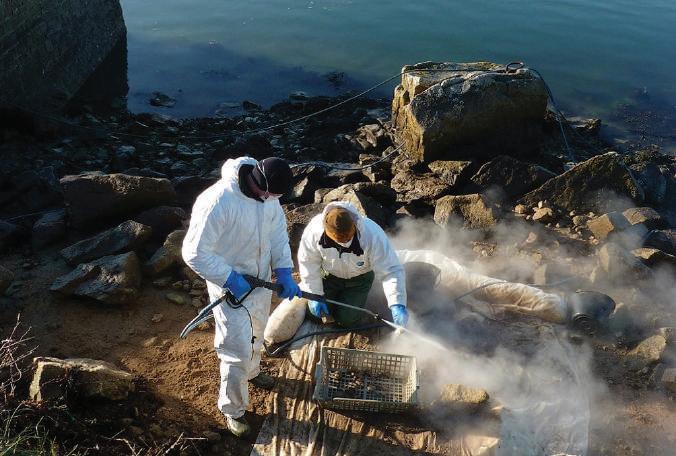
The network, MAR-ICE, will now run at least until the end of 2026, offering continued support in the event of chemical emergencies at sea. Since it became operational, the MAR-ICE service has been activated more than 60 times, both for exercises as well as real incidents, demonstrating the added value of the cooperation established between the three parties.
MAR-ICE provides a single contact point to provide product-specific information and
expert advice, on request, to EU member states and coastal states of the European Free Trade Association (EFTA). When a request is placed, an expert from the chemical industry may be made available to provide on-site advice and assistance at the operational centre of the requesting country dealing with the response operations. This is known as MAR-ICE ‘level-2’ support, which builds on the specialised information and advice already provided remotely by the network known as MAR-ICE ‘level-1’.
This two-tiered approach allows for both remote and on-site expert support to be provided in the event of a chemical emergency at sea. In addition, rapid and direct access to a chemical expert who can provide and clarify relevant information on chemical substances is critical in responding to and managing chemical emergencies, and the MAR-ICE service makes this available 24/7 across the EU.
ICE is a cooperative programme, set up in each European country to provide assistance in an effective way; this includes making use of chemical companies’ own emergency response capabilities, promoting mutual assistance and cooperating with national authorities. Such national ICE schemes are voluntary and normally open to all manufacturers and distributors of chemical products. While the ultimate responsibility for any intervention at the scene of emergency remains with the competent emergency authorities, the chemical industry is aware that specialised knowledge and advice may well be needed when chemicals are involved.
Over the years since the ICE programme was first introduced, the national network has been supplemented by some product-specific schemes covering those substances that require very specific and specialised intervention procedures or equipment, such as bromine, ethylene oxide, acrylonitrile, diisocyanates and titanium tetrachloride.
Similarly, while ICE was initially designed to address accidents during land transport operations, it became evident that incidents at sea present some very specific challenges and that, to provide help, the chemical industry would need the support of EMSA and Cedre. That cooperative approach has now been renewed for another five years.
www.emsa.europa.eu
www.ice-chem.org
wwz.cedre.fr
36 HCB MONTHLY | FEBRUARY 2023
RESPONSE • MAR-ICE, THE COLLABORATIVE PROGRAMME TO RESPOND TO MARITIME POLLUTION EMERGENCIES INVOLVING CHEMICALS, HAS BEEN RENEWED AFTER SHOWING ITS VALUE SINCE 2008
GETTING BETTER
volume of oil spills from tankers has dropped dramatically. These numbers are stabilising at a low level, with the reduction being driven by positive change from the shipping industry, supported by governments. The ongoing commitment to exploring and investing in ways to improve standards is reflected in the trends seen in the spill statistics.
DATA FROM ITOPF shows that seven oil spills of more than seven tonnes were recorded from tanker incidents in 2022. This brings the annual average for the 2020s so far to almost six, which is on a par with the 2010s and continues a dramatic reduction from the numbers reported in earlier decades, as illustrated in the graphic above.
Three of the seven incidents in 2022 resulted in spills greater than 700 tonnes (classified as ‘large’ spills). Two of these incidents occurred in Asia and one in Africa. They resulted in the release of crude, bitumen and fuel oil into the marine environment.
The four other incidents (classified as ‘medium’ spills) involved spills of fuel oil and diesel.
The total volume of oil lost to the environment from tanker spills in 2022 was approximately 15,000 tonnes, more than 14,000 tonnes of which was lost in the three large incidents. This figure is higher than the previous three years but remains a fraction of the 2.95 billion tonnes of crude oil and petroleum products that are transported by sea each year.
These figures are from ITOPF’s preliminary annual report; its full Oil Tanker Spill Statistics report is under preparation and will be issued in due course.
STEADY IMPROVEMENT
ITOPF has recorded tanker spill statistics over the last 50 years and in this time, despite some annual fluctuations, the number and
For example, there were on average 79 spills of oil greater than 7 tonnes from tankers each year during the 1970s, a figure that fell to 48 in the 1980s, 36 in the 1990s and 18 in the 2000s. That trend has been mirrored to some extent by the volume of oil lost to the sea, although one major spill in any particular year can skew the figures; the last major spill involved the Suezmax tanker Sanchi, which collided with a cargo ship in the East China Sea in January 2018, catching fire and spilling some 113,000 tonnes of its gas condensate cargo – the remaining 23,000 tonnes being destroyed in the fire.

It is important to note that although ITOPF attends incidents from all types of ship, for historical reasons the annual statistics publication only reports incidents involving tankers. Accidents involving non-tank vessels that carry oil as bunker fuel may also be a source of pollution. Other non-shipping sources, such as pipeline spills and oil industry activities, as well as natural seepage, also contribute towards the global input of oil into the marine environment.
www.itopf.org
WWW.HCBLIVE.COM
THE TANKER INDUSTRY HAS PUT A LOT OF EFFORT INTO IMPROVING STANDARDS AND THAT IS PAYING OFF IN A CONSISTENT FALL IN THE NUMBER OF POLLUTION INCIDENTS
OIL POLLUTION • ITOPF’S ANNUAL OIL SPILL SURVEY REPORTS ON ANOTHER RELATIVELY QUIET YEAR FOR TANKER INCIDENTS, AS INVESTMENT IN IMPROVING STANDARDS CONTINUES TO PAY OFF
SAFETY 37
RACE TO THE LINE
MULTIMODAL •THE UN EXPERTS HAD A LOT TO GET THROUGH AT THEIR LAST SESSION OF THE 2021/22 BIENNIUM AND MUCH WAS ACHIEVED. SOME IMPORTANT CHANGES ARE COMING
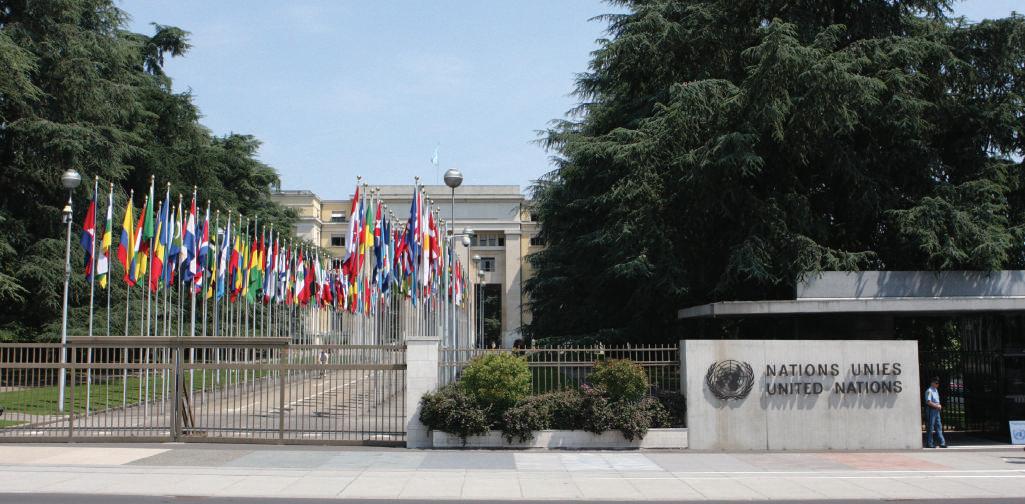
THE UN SUB-COMMITTEE of Experts on the Transport of Dangerous Goods (TDG) held its 61st session this past 28 November to 6 December, possibly for the last time in a hybrid format with some delegates attending in person in Geneva and others joining by online link. Experts from 22 countries took part, along with observers from Luxembourg and representatives of the EU, the Intergovernmental Organisation for International Carriage by Rail (OTIF), the Food & Agriculture Organisation (FAO), the International Civil Aviation Organisation (ICAO), the International Maritime Organisation (IMO), the World Health Organisation (WHO) and 30 non-governmental organisations.
The session was chaired by Duane Pfund (US) with Claude Pfauvadel (France) as vice-chair. It was the last of four sessions of
the 2021/22 regulatory biennium and, as such, the last chance to agree amendments to appear in the 23rd revised edition of the UN Recommendations on the Transport of Dangerous Goods (the ‘Model Regulations’), which is due for publication within the next couple of months.
REVIEW AND ONGOING
The meeting began with a review of the decisions already taken during the biennium, on the basis of a document prepared by the secretariat. After square brackets had been removed and some textual corrections made, the Sub-committee confirmed the amendments.
The OTIF secretariat had urged the reinstatement of the word ‘equipment’ in special provision 388. This was countered by
the International Air Transport Association (IATA) on the basis that SP 388 is assigned to various entries for vehicles and that its applicability to equipment is very limited; as such, there is every reason to remove the word. OTIF withdrew its proposal.
The Council on Safe Transportation of Hazardous Articles (COSTHA) and the Sporting Arms and Ammunition Manufacturers Institute (SAAMI) provided an update on the work to establish an exception from Class 1 classification for certain explosives with a very low hazard and, separately, the evaluation of hazardous effects in Test 6(d). COSTHA and SAAMI offered to facilitate further discussion by submitting research to the Sub-committee for review, likely at one of the sessions planned for 2023. This was welcomed by the Sub-committee, which urged the two organisations to continue with their work.
The Institute of Makers of Explosives (IME) responded to a proposal at the previous session by the Responsible Packaging Management Association of Southern Africa (RPMASA) that the 8(d) test should continue to be used for ammonium nitrate emulsions (ANE) that have been subjected to the 8(e) test. IME argued that RPMASA’s evidence was not relevant to the transport of ANE in tanks
38
HCB MONTHLY | FEBRUARY 2023
and that the material used would not in any case be subject to an 8(e) test. RPMASA thanked IME for the information and offered to work together to prepare a joint paper for the next session.
The European Chemical Industry Council (Cefic) proposed to extend the provision in 1.2.1.4.3 of the Model Regulations and 20.2.5 of the Manual of Tests and Criteria that self-reactive substances of Type A to Type G should not be subject to the self-heating test N.4, as they are likely to give a false positive result of thermal decomposition. Cefic felt that the same characteristics apply to organic peroxides, Type A to Type G, and also to polymerising substances.


There was no opposition to the idea and the proposed amendments were adopted; as Cefic was also planning to present the same proposal to the UN Sub-committee of Experts on the Globally Harmonised System (GHS) of labelling and classification of chemicals, this decision should be brought to its attention.

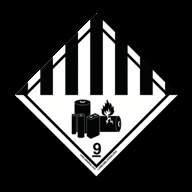

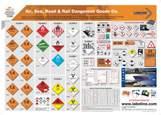
Sweden brought a proposal based on long-running discussions by an intersessional

correspondence group on the classification of Class 1 substances, as well as decisions taken more recently by the Working Group on Explosives. As part of all that work, it had been deemed necessary to revise the definition of ‘pyrotechnic substance’ as its current definition (in 2.1.1.3 of the Model Regulations) deals only with its design rather than its intrinsic properties.
The Sub-committee, which had been following discussions, was primed to accept the proposal, amending the definition of ‘pyrotechnic substance’ in 2.1.1.3(b) and also adding a new definition at 2.1.1.3(e) for ‘explosive or pyrotechnic effect’.
Once more, this change will need to be referred to the GHS Sub-committee, with proposals for similar amendments in 2.1.1.1 of that document.
Another ongoing topic to achieve resolution was the subject of a proposal by Cefic and the World Nitrocellulose Producers Association (Wonipa) and related to the transport of nitrocellulose membrane filters. The issue had come to the fore as such filters have been

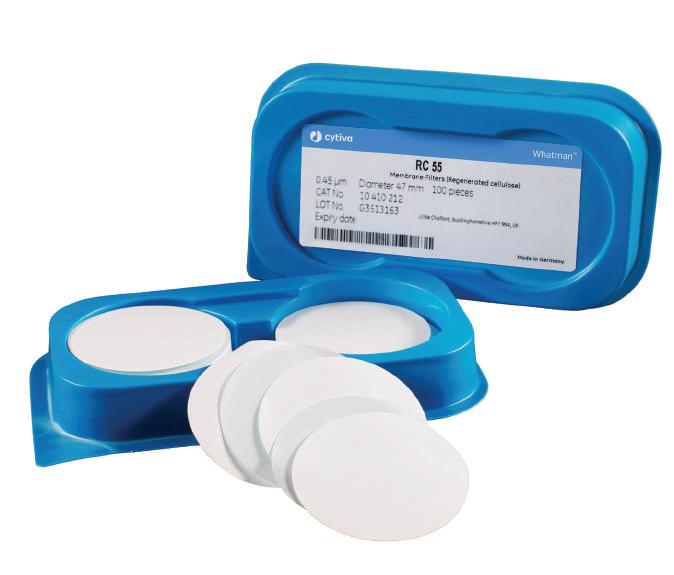
REGULATIONS 39
WWW.HCBLIVE.COM Who do you contact for the latest DG compliant labels? Tel: +44 (0)870 850 50 51 Email: sales@labeline.com www.labeline.com Free DG Label ID poster with every order appointed
widely used in Covid-19 rapid test devices and a simpler way of packaging and transporting them has become urgently required.
Again, the Sub-committee was ready and waiting and, with a minor alteration, adopted the proposed new special provision, now SP 403, to exempt NC membrane filters from the provisions of the regulations under specified conditions.
Cefic also picked up on discussions at the previous session on liquid desensitised explosives. At present, special provision 28 is assigned to a large number of (but not all) solid desensitised explosives of Division 4.1 but not to any liquid desensitised explosives. In order to establish common and consistent quality requirements for the safe transport of desensitised explosives, Cefic proposed extending the applicability of SP 28 to UN entries for three further solid and five liquid desensitised explosives; it also noted that UN 3343 nitroglycerine mixture is not assigned a packing group and invited the Sub-committee to decide if PG II was appropriate.
The proposal was supported by China and, after discussion and some amendment, was adopted in part. SP 28 will now be assigned to UN Nos 1204, 2059, 2555, 2556, 2907, 3064, 3319, 3343, 3344 and 3357. An additional sentence is also added a the end of SP 28: In cases where the diluent is not stated, the substance shall be packed so that the amount of explosive substance does not exceed the stated value.
LISTING AND CLASSIFICATION
There had been discussions at the previous session about the current definition of ‘specific activity’ and whether this means the same as ‘activity concentration’, which is the term generally used in the Model Regulations. After consultation with the International Atomic Energy Agency (IAEA), the secretariat was able to confirm that this was the case and proposed to add a clarification in the form of a Note to the definition of ‘specific activity of a radionuclide’ in 2.7.1.3 to specify that, for the purposes of the regulations, the two terms are synonymous.
The Sub-committee welcomed an initiative by the World LPG Association and Liquid Gas
Europe to bring to its attention the growing use of bio-blends in LPG as well as renewable dimethyl ether (DME) as a standalone product or blended with LPG. The two associations invited an informal exchange of views on whether existing UN numbers should be redefined or whether new entries would be more appropriate.
While there was support for the idea of inserting a new special provision, the Sub-committee ultimately agreed that more research and data was needed on the properties of LPG with different levels of DME, as well as the compatibility of DME with the materials used in the construction of tanks, cylinders and their sealings. The two associations will bring more information to the next session where discussion will resume. Germany proposed a change to the classification of UN 1040 ethylene oxide to take account of its corrosivity, as identified by the EU’s Council on classification, labelling and packaging. At the previous session it had
proposed in an informal document adding a Class 8 subsidiary hazard and it now came back with more data to support the proposal. In the end, though, the experts failed to agree, with the general feeling that more work was needed. Germany offered to return at the next session with a revised proposal.
The World Coatings Council (WCC) appealed once more for some relief for the shipment of small quantities (up to 30 litres) of paints and printing inks that are environmentally hazardous and usually assigned to UN 3082. There is some relief provided for paints, printing inks, adhesives and resin solutions in quantities below 5 litres in special packaging provision PP1 but, WCC contended, industry has problems in finding suitable UN-approved packagings for larger quantities.
WCC noted that there are other UN entries applicable to flammable mixtures (UN 1210 and 1263) and for paints classified as corrosive but that a large proportion of water-borne paints have been reclassified

40 HCB MONTHLY | FEBRUARY 2023
following a change to the EU’s Regulation on the classification, labelling and packaging of chemicals (CLP) and now fall under the very broad UN 3082 entry.



WCC proposed either creating separate UN entries for environmentally hazardous paint and printing ink mixtures (liquid and solid), along with a new packaging provision, or a new special provision to allow paints and printing inks to be distinguished from other UN 3082 materials. The Sub-committee remained concerned that such a move could set a precedent for other products and declined to accede to the request. On the other hand, it did suggest that it might be worthwhile discussing the need for performance-oriented packagings for environmentally hazardous products. Furthermore, regional or modal solutions might be sought through the various regulations. WCC was invited to discuss the matter further with interested delegates.
China suggested some amendments to the provisions requiring a fire test for UN 3164 articles, pressurised, pneumatic or hydraulic, as expressed in special provisions 238 and 371. As the texts stand, China argued, there are contradictions. The Sub-committee



agreed to one change, which is to insert a reference to 16.6.1.3.4 of the Manual of Tests and Criteria, alongside other paragraphs, in

Another paper from China suggested the deletion of “and” in 3.1.2.2; this refers to the selection of proper shipping names for UN entries that offer alternatives. However, China said, it could find no examples of “and” being
Dangerous Goods List. The Sub-committee concurred and deleted ‘“and” or’ from 3.1.2.2.

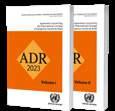



China also proposed the deletion of packing group assignments in the Dangerous Goods List for polyester resin kits of UN 3269 and 3527, in line with other entries for articles, and to revise special provision 236 to provide

packaging of such kits. This would be in line with the approach taken for chemical kits and first aid kits. The Sub-committee did not feel that the similarity between polyester resin kits on the one hand and chemical or first aid kits on the other was close enough to persuade it to take that route and most experts who spoke
enough as it stands. Without a pressing safety concern, there is no need for an amendments.

REGULATIONS 41
WWW.HCBLIVE.COM 2023 IATA DGR Tel: +44 (0)870 850 50 51 Email: sales@labeline.com www.labeline.com Who do you contact for the latest DG compliant labels? Tel: +44 (0)870 850 50 51 Email: sales@labeline.com www.labeline.com Free DG Label ID poster with every order For a local, professional consultant DGSA, contact Labeline The ‘Biennial’ returns! THE multimodal regulatory update webinar 18th October 2022 Do you consign Dangerous Goods? All UK consignors must have an appointed DGSA by 1st January 2023 Free worldwide shipping from IATA’s leading international distributor
China will consider the comments and may return with a revised proposal.
Since the last session, the secretariat had been working with the European Industrial Gases Association (EIGA) on a review of the tables in packing instruction P200; the secretariat also took the opportunity to review the other packing instructions to identify possible areas of improvement and arrived with a lengthy list of proposed editorial amendments. These were largely accepted by the Sub-committee and, while they do not make any substantive changes, they do provide greater clarity in some instructions that should help improve understanding and compliance.
The secretariat had also followed up on the assignment of portable tank instructions and portable tank special provisions, after a discussion at the previous session. It offered three proposals for amendment, of which two were accepted by the Sub-committee.
For UN 0331, ‘TP1’ is deleted from column (11) in the Dangerous Goods List, as this entry is used only for ammonium nitrate fuel oil
(ANFO) and there is therefore no need for the degree of filling requirement stipulated by TP1.
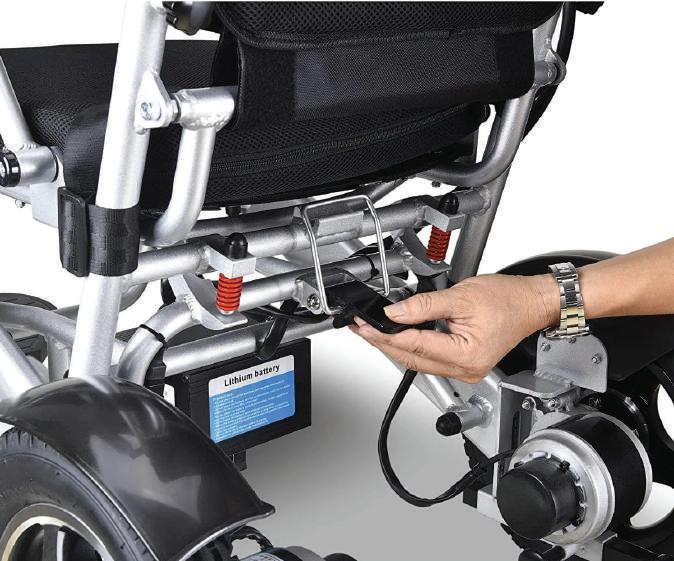
The last session had queried the inclusion in the Model Regulations of some unused portable tank instructions and it had been asked whether these should be deleted. Overall, it was deemed sensible to retain them, as there are some older portable tanks to which those instructions applied. To clarify matters, the secretariat proposed two changes in the Guiding Principles.
In Part IV, C.2, paragraph 7 is amended to read:
When a specific portable tank instruction is specified in Column 10 for a specific dangerous goods entry, additional portable tanks with higher test pressures, greater shell thicknesses, more stringent bottom openings and pressurerelief device arrangements may be used, in accordance with the table in 4.2.5.2.5.
And there is a new paragraph 8 (with subsequent paragraphs renumbered):
Some of the portable tank instructions in the T1 to T22 range are currently unused. In other
words, there are no substances in the dangerous goods list which have these instructions assigned to them. These portable tank instructions are nevertheless kept in the regulations, as portable tanks can be constructed and marked according to any of these portable tank instructions and used to transport substances with other codes, in accordance with the table in 4.2.5.2.5.
It had been suggested that the assignment of TP31 to two entries – UN 1422 potassium sodium alloys, liquid and UN 1381 phosphorus, white or yellow, dry or under water or in solution – was incorrect and the secretariat proposed deleting that too. However, the Sub-committee felt more research was needed before that step could be taken.
In an informal document, Germany opened a discussion on the classification of chlorophenols; these currently have two UN entries, 2020 and 2021, both under Division 6.1, PG III; work at the IMO has pointed to a corrosivity hazard for many chlorophenols, in some cases severe enough to warrant a PG II assignment. Germany offered a few ideas for clarifying the classification of chlorophenols, of which the Sub-committee preferred the creation of two new UN entries for those substances presenting a corrosive hazard. There were some experts who demurred, being unconvinced of any safety concerns. Germany offered to prepare an updated proposal for the next session, to include additional justification.
Germany also presented a paper noting confusion in the differentiation between UN 1950 aerosols and UN 2037 receptacles, small, containing gas (gas cartridges). Its paper began with an illustration of two products on the market, which are to all intents and purposes identical and contain the same propane/butane mix, with one marked UN 1950 and the other UN 2037. The Model Regulations differentiate the two only insofar as gas cartridges are not equipped with a release device, whereas aerosols are, though the term ‘release device’ is not defined. Germany also noted that, in the EU, aerosols are subject to the Aerosol Dispenser Directive (75/324/EEC) while gas cartridges fall under the Transportable
42 HCB MONTHLY | FEBRUARY 2023
Pressure Equipment Directive (2010/35/EU) and that, therefore, different conformity



The Sub-committee welcomed the initiative, though there were some who doubted the need for major changes, and, following an informal discussion, it was agreed that there was a need to harmonise the provisions in the Model Regulations. The expert from Germany offered to set up a correspondence group to further develop the proposed options and to prepare an updated document for the
The previous two sessions of the Subcommittee had discussed a possible revision of the classification of tetramethylammonium hydroxide (TMAH), based on human experience, to give precedence to its toxic hazard. The Netherlands had summarised those discussions and arrived with a formal proposal to revise the current UN entries for TMAH – UN 3423, Class 8, PG II for solid material and UN 1835, Class 8, PG II/III for solutions (with no concentration limits). Cefic and the Dangerous Goods Advisory Council (DGAC) presented a complementary paper that supported the changes but queried the
The proposals were discussed in an informal session led by Belgium, which failed to reach a consensus. Eventually, on a vote, the Sub-committee adopted revised proposals
tetramethylammonium hydroxide solution is split into three, with the proper shipping name expanded to include the word ‘aqueous’ before ‘solution’. The first entry applies to solutions with not less than 25 per cent TMAH, assigned to Division 6.1 with a Class 8 subsidiary hazard, PG I; the second concerns solutions with more than 2.5 but less than 25 per cent TMAH and is assigned to Class 8 with a Division 6.1 subsidiary hazard, PG II; the third is for non-toxic material with a TMAH content of not more than 2.5 per cent, Class 8, PG III. A new special provision 408 has been adopted to fully explain the classification and a second, SP 409, provides some transitional relief until
The entry for UN 3423 tetramethyl ammonium, solid is now Division 6.1 with a Class 8 subsidiary hazard, PG I (rather than PG II). Its packaging and tank provisions have been altered to reflect the PG assignment.
You need
Labeline is the leading worldwide “One Stop Dangerous Goods Service” for Air, Sea, Road, and Rail



We serve Freight Forwarders, Shippers, Airlines, DCA’s, Port Authorities, Petrochemical industry and the Pharmaceutical industry.
Labeline is one of the world’s leading regulatory services and product provider; we hold comprehensive stocks with a fast worldwide delivery service.
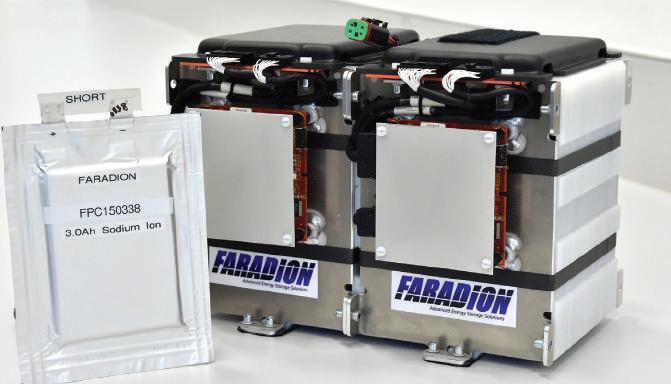
We are one of the very few authorised Multi-mode providers worldwide and described by industry as a pro-active organisation, our name is recommended by many leading authorities and a world class service providers.
When it’s time to order your DG products and services, Labeline will be your “One Stop Service”



Compliant with IATA, ICAO, ADR, IMDG, RID, DoT


Tel: +44 (0)870 850 50 51
Email: sales@labeline.com
www.labeline.com
IATA had, at the previous session, opened discussion on potential options for improving hazard communication for vehicles powered by lithium batteries, especially those personal mobility devices that are often shipped by air, typically packed in fibreboard boxes. That discussion revealed a clear preference for a new entry in the Dangerous Goods List and IATA now returned with a formal proposal. After discussion and a contribution from the UK, it was eventually decided to add three new
Tel: +44 (0)870 850 50 51
Email: sales@labeline.com www.labeline.com
REGULATIONS 43 WWW.HCBLIVE.COM
Who do you contact for the latest DG compliant
Email: sales@labeline.com www.labeline.com
Tel: +44 (0)870 850 50 51
Labeline.com
Dangerous Goods Labels Regulations Documentation Packaging Software Training GHS Chem Regs Free DG Label ID poster with every order For a local, professional consultant DGSA, contact Labeline The ‘Biennial’ returns! THE multimodal regulatory update webinar 18th October 2022 Do you consign Dangerous Goods? All UK consignors must have an appointed DGSA by 1st January 2023 Free worldwide shipping from IATA’s leading international distributor
entries, two special provisions and a new packing instruction. The new entries are:
• UN 3556 Vehicle, lithium ion battery powered
• UN 3557 Vehicle, lithium metal battery powered
• UN 3558 Vehicle, sodium ion battery powered
Special provision 404 largely exempts UN 3558 from the provisions of the Model Regulations, provided that the battery is short-circuited in a verifiable manner. Another new special provision, SP 405 applies to all three new entries and states:
Vehicles are not subject to the marking or labelling requirements of Chapter 5.2 when they are not fully enclosed by packagings, crates or other means that prevent ready identification.
All three new entries are accompanied by a new packing instruction P912, reading:
The vehicle shall be secured in a strong, rigid outer packaging constructed of suitable material, and of adequate strength and design in relation to the packaging capacity and its intended use. It shall be constructed in such a manner as to prevent accidental operation during transport. Packagings need not meet the
requirements of 4.1.1.3. The vehicle shall be secured by means capable of restraining the vehicle in the outer packaging to prevent any movement during transport which would change the orientation or cause the battery in the vehicle to be damaged.
Vehicles transported in a packaging may have some parts of the vehicle, other than the battery, detached from its frame to fit into the packaging. NOTE: The packagings may exceed a net mass of 400 kg (see 4.1.3.3).
Vehicles with an individual net mass of 30 kg or more:
(a) may be loaded into crates or secured to pallets; or
(b) may be transported unpackaged providing that the vehicle is capable of remaining upright during transport without additional support and the vehicle provides adequate protection to the battery so that no damage to the battery can occur; or
(c) where the vehicle has the potential to topple over during transport (e.g. motor cycles), may be transported unpackaged in a cargo transport unit fitted out with the means to prevent toppling in transport, such as by the use of bracing, frames or racking.
COSTHA sought an end to long-running discussion of the classification of fire suppressant dispersing devices, which generally contain a pyrotechnic material for initiation. These devices are typically shipped either under UN 3268 safety devices or UN 0432 articles pyrotechnic for technical purposes, though neither really communicates the nature of the hazard or the purpose of the devices. Earlier discussions had raised a number of technical questions, which COSTHA now answered to the satisfaction of the Sub-committee, which – after some discussions and disagreements - agreed to adopt two specific entries for fire suppressant dispersing devices: UN 0514 for devices meeting the criteria for classification under Division 1.4S and UN 3559 for those that do not meet those criteria. Both are assigned a new special provision, SP 407:
Fire suppressant dispersing devices are articles which contain a pyrotechnic substance, which are intended to disperse a fire extinguishing agent (or aerosol) when activated, and which do not contain any other dangerous goods. These articles, as packaged for transport, shall fulfil the criteria for Division 1.4S, when tested in accordance with test series 6(c) of Section 16 of Part 1 of the Manual of Tests and Criteria. The device shall be transported with either the means of activation removed or equipped with at least two independent means to prevent accidental activation.
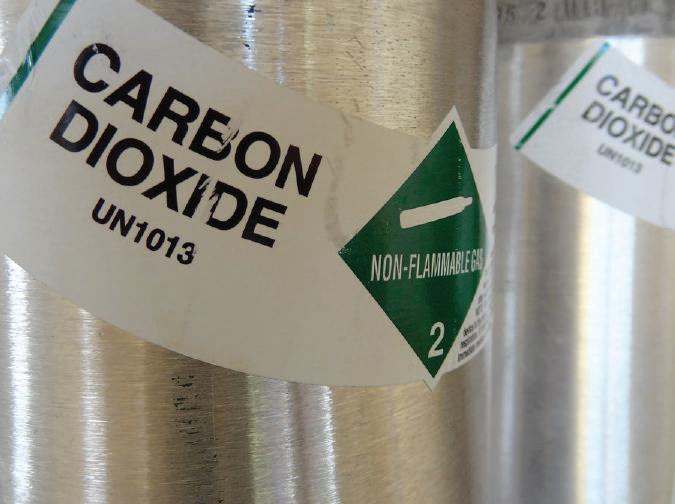
Fire suppressant dispersing devices shall only be assigned to Class 9, UN 3559 if the following additional conditions are met:
(a) The device meets the exclusion criteria in 2.1.3.6.4 (b), (c) and (d);
(b) The suppressant shall be deemed safe for normally occupied spaces in compliance with international or regional standards (e.g. NFPA2010);
(c) The article shall be packaged in a manner such that when activated, temperatures of the outside of the package shall not exceed 200 °C;
(d) This entry shall be used only with the approval of the competent authority of the country of manufacture.
This entry does not apply to “SAFETY DEVICES, electrically initiated” described in special provision 280 (UN 3268).
44 HCB MONTHLY | FEBRUARY 2023
ENERGY STORAGE SYSTEMS
China noted that, while the Model Regulations will now have separate entries for lithium ion, lithium metal and sodium ion cells and batteries, industry continues to progress with new designs and some of these new batteries incorporate both lithium ion and sodium ion cells. How, then, should these be classified?
China suggested that they should be treated as if they were lithium ion batteries, perhaps with a new special provision to explain the situation. The Sub-committee acknowledged that the current provisions for the testing and packaging of such hybrid batteries are unclear and could benefit from a review. China offered to submit a new and more detailed proposal at the next session.
Another informal document from China addressed the increasing size of some lithium ion batteries that are now being shipped, some of which can exceed 3 m3 in size.
China’s paper suggested that the labelling provisions for such article be amended, perhaps in line with those already in place for large packagings and internal combustion
engines, and it offered a text for consideration. This included the use of placard-size labels (250 mm x 250 mm) on two opposite sides of a battery.
Opinions were divided, with some experts expressing the belief that the labelling requirements are well established and any amendment might result in unintended consequences. China volunteered to work on a follow-up proposal for the next session.

The secretariat had taken it upon itself to review the use of terminology relating to batteries throughout the English, French and Spanish versions of the Model Regulations and Manual of Tests and Criteria, taking account along the way of the conventions on the use of the International System of Units (SI) – which led to a number of purely editorial amendments.
The term ‘rated capacity’ is defined in the Manual of Tests and Criteria and is used in a couple of places in the Model Regulations, although in a different context and with different meanings. The terms ‘nominal energy’ and ‘watt-hour rating’ are
synonymous and defined in the Manual of Tests and Criteria. The French version of the Model Regulations uses only one term for ‘nominal energy’ and ‘watt-hour rating’ but the English and Spanish version use both terms. There was a general consensus for the English version to use the term ‘watt-hour rating’, which is more widely used in practice. The secretariat was asked to submit an official proposal for the next session, taking account of the comments made.
The Rechargeable Battery Association (PRBA) and the Advanced Rechargeable & Lithium Batteries Association (Recharge) gave a joint presentation on the work that had been done at the Sub-committee’s behest to investigate current practices in the recycling and reuse of batteries. The two associations reported that a variety of terms are being used (including ‘refurbishment’ and ‘repurposing’) and that various industry and ISO standards already exist. Clearly, not all industry definitions need to be listed in the Model Regulations but further work is necessary; the informal working group was urged to continue its deliberations.
TRANSPORT OF GASES
COSTHA pressed its case for an increase in the limited quantity limit for gases of Division 2.2 with no subsidiary risks, consistent with current provisions in SP 653 of ADR. There had been some support for the idea at previous sessions, though the Sub-committee appeared keen to limit the extent of the change and were concerned that any such change should not be applied to air transport. After some discussion and despite opposition from some, it was eventually decided on a vote to adopt part of COSTHA’s proposal. This includes the assignment of a new special provision applicable only to argon (UN 1006), carbon dioxide (UN 1013), helium (UN 1046) and nitrogen (UN 1066). That new special provision, SP 406, reads:
This entry may be transported in accordance with the limited quantity provisions of Chapter 3.4 when transported in pressure receptacles containing not more than 1 000 ml. The pressure receptacles shall meet the requirements of packing instruction P200 of 4.1.4.1 and have a
REGULATIONS 45
WWW.HCBLIVE.COM
test pressure capacity product not exceeding 15.2 MPa·l (152 bar·l). The pressure receptacles shall not be packed together with other dangerous goods.
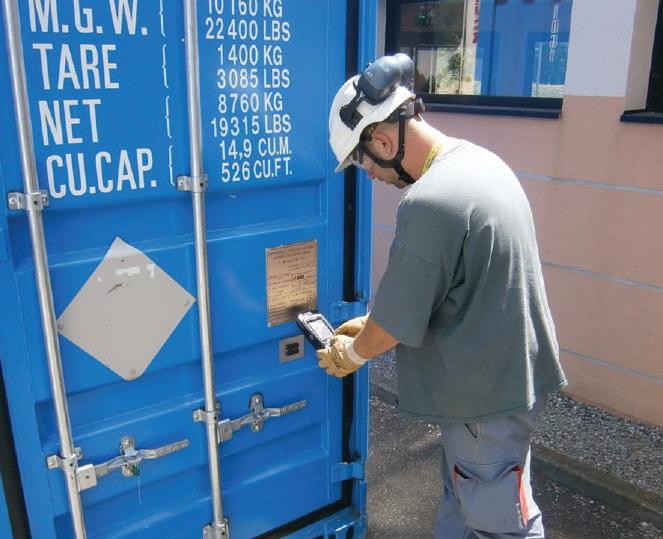
The International Organisation for Standardisation (ISO) arrived with more information on two revised standards that had been introduced to the Sub-committee at the previous session, where more information had been requested. One of these is ISO 98094:2021, which had been revised to include a specific clause on type approval/production tests for cylinders ordered in small quantities. ISO said that, in practice, this standard is typically used only for cylinders made in small quantities, although ‘small quantities’ is not defined – it has now proposed adding a note to limit this to batches not exceeding 200 cylinders.
The second standard in question is ISO 23826:2021, a new standard on the specification and testing of ball valves for gas cylinders. These were formerly covered by ISO 10297:2014 but ISO decided this standard is not applicable to some specific valve designs
and has excluded them since a revision in 2017.
The Sub-committee agreed to adopt the new and revised standards in the appropriate tables in Chapter 6.2, along with some consequential amendments elsewhere in the Model Regulations.
Germany provided a report of the intersessional working group on the pVproduct limit for pressure receptacles, which had met for the fifth time earlier in November under the chairmanship of Dr Georg Mair. The report included some potential amendments to the definitions of ‘pressure receptacle’, ‘bundle of cylinders’, ‘cylinder’, ‘tube’ and ‘salvage pressure receptacle’ in 1.2.1, to give the Sub-committee an idea of its plans, although these remain to be finalised. The working group has invited to continue its work, with the aim of presenting a formal document at the next session.
MISCELLANEOUS PROPOSALS
The International Confederation of Plastics Packaging Manufacturers (ICPP) and the International Confederation of Intermediate Bulk Container Associations (ICIBCA), with one eye on the UN’s Sustainable Development Goals, felt the time was ripe for a formal proposal to revise the current provisions in the
Model Regulations relating to the use of recycled plastics material. Their joint proposal offered some ideas to streamline the provisions, on the basis of experience since the current text was introduced more than 20 years ago, and to extend it to allow the use of recycled plastics materials from sources other than used dangerous goods packagings. Another paper from Belgium addressed the same issue from the viewpoint of recent ISO work on the revision of ISO 16103:2005.
After an informal session led by Belgium, a joint informal document was put forward by ICPP, ICIBCA and Belgium, the Subcommittee agreed to amend the definition of ‘recycled plastics material’ as follows:
Recycled plastics material means material recovered from used industrial packagings or from other plastics material that has been pre-sorted and prepared for processing into new packagings, including IBCs. The specific properties of the recycled material used for production of new packagings, including IBCs, shall be assured and documented regularly as part of a quality assurance programme recognized by the competent authority. The quality assurance programme shall include a record of proper pre-sorting and verification that each batch of recycled plastics material, which is of homogeneous composition, is consistent with the material specifications (melt flow rate, density, and tensile property) of the design type manufactured from such recycled material. This necessarily includes knowledge about the plastics material from which the recycled plastics have been derived, as well as awareness of the prior use, including prior contents, of the plastics material if that prior use might reduce the capability of new packagings, including IBCs, produced using that material. In addition, the packaging or IBC manufacturer’s quality assurance programme under 6.1.1.4 or 6.5.4.1 shall include performance of the appropriate mechanical design type tests in 6.1.5 or 6.5.6 on packagings or IBCs, manufactured from each batch of recycled plastics material. In this testing, stacking performance may be verified by appropriate dynamic compression testing rather than static load testing.
The informal working group on fibrereinforced plastics (FRP) service equipment for portable tanks reported on its last
46 HCB MONTHLY | FEBRUARY 2023
IMO’S WORK ON DATA LOGGERS MAY HAVE CONSEQUENCES FOR OTHER MODAL REGULATIONS
meeting, held just before the Sub-committee’ session. A number of comments were made, which will be taken into account when the working group convenes again early this year to finalise new draft provisions for Chapter 6.9 that will be presented at the next session in an official document.
At the previous session, the US presented an informal document seeking to add a special provision for UN 1391 alkali metal dispersions and UN 3482 alkali metal dispersions, flammable, to allow the transport of lithium dispersions in UN portable tanks. The proposal responded to the increasing need to transport lithium dispersions internationally to service the growing demand for its use in energy storage applications. The idea had received broad support, with some experts suggesting that it should be broadened to cover other alkali metal and alkaline earth metal dispersions.
The US now returned with a formal proposal, containing details on the products concerned and the rationale for the assignment of portable tank instruction T13 and portable tank special provisions TP1 and TP7. After discussion, TP1 was replaced by
TP2 to lower the degree of filling. The Sub-committee agreed to insert these against UN 1391 and 3482, along with a new TP42, which states that portable tanks are not authorised for the transport of caesium or rubidium dispersions. The Sub-committee will review the question of whether an amendment in the Guiding Principles is required.
GLOBAL HARMONISATION
The Sub-committee was informed about ongoing discussions at IMO’s Sub-committee on Carriage of Cargoes and Containers (CCC) on proposed amendments to 5.5.4 of the IMDG Code, relating to ‘devices in use or intended for use during transport’, which could have consequences for multimodal transport. The Sub-committee felt the work by CCC could be useful for other transport modes, though it may also impact the scope of applicability so would need careful consideration. Discussion will resume at the next session, following the outcome of work by CCC’s Editorial & Technical Group in spring.
Following discussion at the previous session on the need for updates to some standards referenced in the Manual of Tests and Criteria,
the secretariat presented an informal document on the outcome of its discussions with ISO. The Sub-committee asked that this be re-submitted as an official document for the next session, which gives delegations time to review the listed standards.
Germany reported on discussions by the informal working group on combinations of physical hazards, established by the GHS Sub-committee in December 2018. Its work had thrown up some queries, mostly for the GHS Sub-committee, but the TDG Subcommittee was asked about the notes concerning the listed components of aerosols and chemicals under pressure and whether these are accurately reflected in special provisions 63 and 362. The Sub-committee confirmed the interpretation and noted that those two special provisions should be aligned.
Germany and the US presented a details paper summarising the work of the GHS Sub-committee on the classification of desensitised explosives and the discussions at the previous session of the TDG Subcommittee and its Working Group on Explosives. This was accompanied by a proposal for amendments to Section 51 of the Manual of Tests and Criteria. The Australasian Explosives Industry Safety Group (AEISG) supported the proposal in principle but believed that it would lead to additional and unjustified testing and also fails to consider current obligations. The Sub-committee decided to defer these points to the next biennium and meanwhile adopted the proposed amendments to Section 51.
Germany, as chair of the Working Group on Explosives, proposed to both the TDG and GHS Sub-committee a change to the flash point testing criteria, which was accepted by the TDG Sub-committee as an amendment to Section 32 of the Manual of Tests and Criteria. This is specifically to address the issue that some substances cannot be tested using the closed cup method. A new paragraph is added under the heading of 32.4:
It is recommended to use closed-cup test methods for the determination of the flash point. Open-cup test methods are acceptable for liquids which cannot be tested in closed-cup test methods (e.g., due to their viscosity) or when open-cup test data is already available. In these
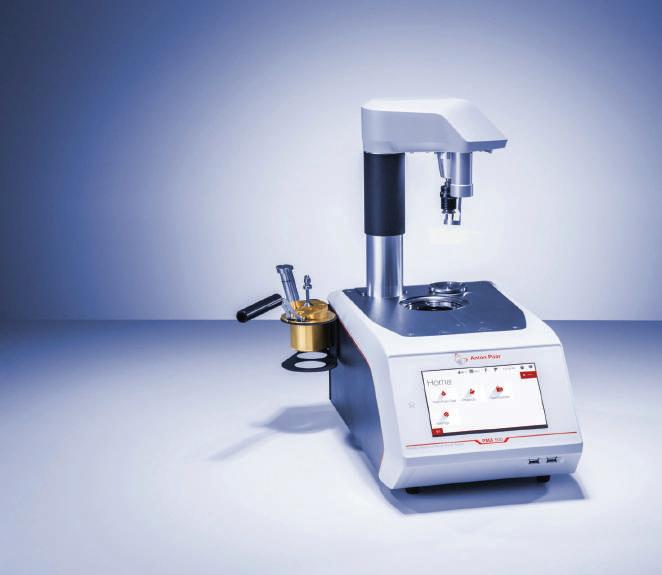
REGULATIONS 47
WWW.HCBLIVE.COM
cases, 5.6 °C should be subtracted from the measured value, because open cup test methods generally result in higher values than closedcup test methods.
This decision was to be reported to the GHS Sub-committee, as was the next amendment, based on a paper from China, which pointed out that there are two different classification criteria for flammability of powdered, granular or pasty substances or mixtures based on the results of Test N.1. On the one hand are ‘powders of metals or metal alloys’ and on the other all other substances or mixtures. This is reflected in the Model Regulations (at 2.4.2.2.2.1), GHS and the Manual of Tests and Criteria. However, China said, other paragraphs that relate to Test N.1 indicate that only metal powders should be considered separately; these ought to also refer to powders of metal alloys, which share the same characteristics. Its paper was followed by an informal document from the UK that offered a slightly different wording with fewer changes needed, which was accepted by the Sub-committee. This is based on the use of the term ‘metal powders’, which is already
used throughout the Model Regulations, and includes a new definition under 2.4.2.2.1.2 to clarify that ‘metal powders’ are powders or metals or metal alloys, allowing ‘metal powders’ to be used in 2.4.2.2.2.1 and 2.4.2.2.3.1. Similar changes are made in Section 33.2 of the Manual of Tests and Criteria and were proposed for Chapter 2.7 of GHS.
INTERPRETATION AND IMPLEMENTATION
An informal document from the US sought to prompt a continuation of earlier discussions on the possibility of developing a system of unified interpretations for the Model Regulations, which has so far received general support. The Sub-committee agreed to keep the topic on the agenda for the coming biennium and it was suggested that a brainstorming meeting be organised for the next session.
The US also reminded the Sub-committee of its earlier decision to keep abreast of the level of implementation of the Model Regulations in countries around the world; the US Pipeline and Hazardous Materials Safety
Administration (PHMSA) has now developed an interactive map that gives details of the relevant edition of the Model Regulations in force in different countries, along with details of competent authorities. This can be found at www.phmsa.dot.gov/international-program/ international-list-competent-authoritiesandor-contacts-transport-dangerous-goods. The information provided by the map is being constantly updated and the US invited ideas for collaboration so that the information can be both maintained and disseminated.
The US also reported on a national initiative – ‘Check the Box’ – to raise awareness of the transport of dangerous goods and the problems of non-declaration. The US invited other delegations to review the information presented through the initiative and to discuss with it the possibility of collaborative efforts on public awareness campaigns.
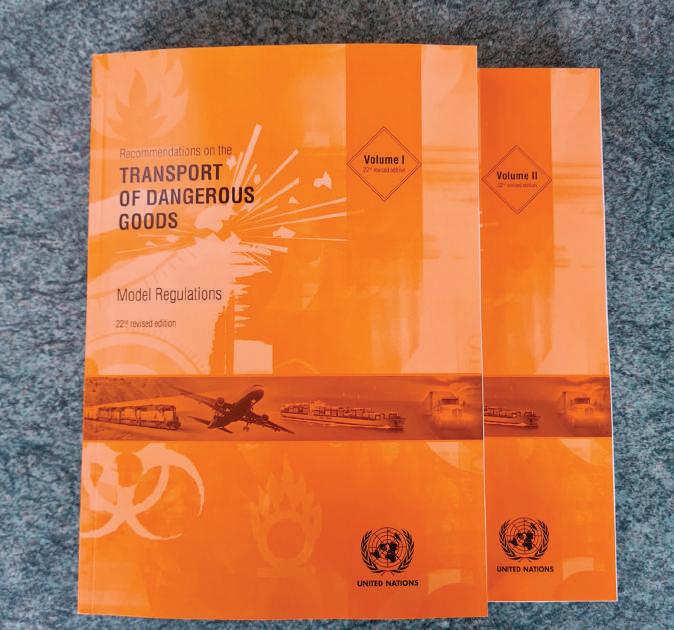
PROGRAMME OF WORK
The UN office in Geneva is planning to revert to ‘business as usual’ as from 2023 and there was an exchange of views on the opportunities available to enhance the operational efficiency of the Sub-committee’s work, taking into account any lessons learned during the Covid-19 pandemic period. This discussion will be continued.
The Sub-committee bade farewell to Maureen Ruskin (US) and David Brennan (IATA), who are both planning to retire and will no longer attend the sessions. Claude Pfauvadel is planning to retire at the end of 2023 but will continue to act as vice-chair for the next two sessions. Duane Pfund was re-elected as chair for the biennium.
The next session of the TDG Subcommittee, the first of the new biennium, is scheduled to take place from 3 to 7 July 2023, with the 63rd session scheduled for 27 November to 6 December. That second session will include a joint session of the TDG and GHS Sub-committees.
HCB will provide a consolidated list of the main amendments appearing in the 23rd revised edition of the UN Model Regulations in the March 2023 issue.
48 HCB MONTHLY | FEBRUARY 2023
BATTERY BASICS
AIR • THE NEW EDITIONS OF THE AIR TRANSPORT REGULATIONS CONTAIN NUMEROUS CHANGES TO THE PROVISIONS FOR THE TRANSPORT OF LITHIUM BATTERIES. IATA’S GUIDANCE HAS ALSO BEEN UPDATED
the 2023-2024 edition of the Technical Instructions and can be downloaded free of charge from the IATA website at www.iata.org/ contentassets/05e6d8742b0047259bf3a700bc9 d42b9/lithium-battery-guidance-document.pdf.
WHAT’S NEW
THE REGULATIONS THAT govern – and restrict – the transport of lithium cells and batteries have developed in a rather haphazard manner over the years, resulting in a complex matrix of rules and provisions. They have also been changed remarkably often and, according to responses to Labelmaster’s annual DG Confidence survey, this makes it difficult for dutyholders to maintain compliance, especially if they are not normally subject to the dangerous goods regulations. But safety in the transport of lithium (ion and metal) batteries is critical, and nowhere more so than in air transport. In order to help dutyholders and improve the level of compliance, the International Air Transport
Association (IATA) has for some years provided assistance through its Lithium Battery Guidance Document, which it updates to coincide with the biennial publication of the International Civil Aviation Organisation’s (ICAO) Technical Instructions. IATA also publishes a separate document, the Lithium Battery Shipping Regulations (LSBR), now in its 10th edition, which includes all relevant content from the IATA Dangerous Goods Regulations together with other information, including classification flowcharts and detailed examples of packing and documentation. It can be found at www.iata.org/lsbr.

A new edition of the Lithium Battery Guidance Document is now available to reflect
The IATA document gives a very clear and very thorough explanation of the requirements involved in the transport of lithium ion and metal cells and batteries by air, starting with definitions and the various possible classifications. There is a slight change this year, as button cells installed in equipment no longer have to comply with the requirements to make available the lithium cell or battery test summary (the ’38.3’ test) and there are also changes to the information that should be in the test summary.
IATA has also updated the extremely useful classification flowcharts (one for lithium metal batteries, one for lithium ion batteries), which show clearly the differences between assignment to Section I and Section II (for batteries contained in or packed with equipment), or Section IA and IB (for standalone batteries), as well as the applicable packing instructions, labels and marks, and maximum mass per package.
A large part of the IATA document deals with frequently asked questions, based on those questions that IATA receives most often. There are three new FAQs in this year’s document, which will be of help to those looking to understand whether a package needs to bear the lithium battery mark, whether a nylon bag can be considered an overpack for PI 967, Section II batteries (‘no’) or whether packages need to be tested to prove their ability to withstand a 3-metre stack test (PI 965, 968, Section IB). As regard the latter question, IATA says a formal test is not required but shippers should carry out and document a simple 24-hour test themselves. More information on IATA’s dangerous goods programme can be found at www.iata.org/en/ programs/cargo/dgr/. IATA’s website also has a dedicated area on lithium batteries (www.iata.org/lithiumbatteries/) that has links to the Guidance Document, risk assessment guidance for operators and other related safety information.
WWW.HCBLIVE.COM REGULATIONS 49
FINAL REMINDER
USA • PHMSA FINISHED OFF 2022 WITH A PAIR OF FINAL RULES, WHICH SHOULD BE NOTED AS THEY MAY HAVE AN IMPACT ON MANY SHIPPERS AND CARRIERS, ESPECIALLY IN THE AVIATION SECTOR

THE US PIPELINE and Hazardous Materials Safety Administration (PHMSA), an agency of the Department of Transportation (DOT), issued two final rules in the last week of December 2022. While neither is a major rulemaking, both should be noted by shippers and carriers within the US as well as those exporting to the country.
The first and rather more important final rule, under docket HM-224I, was published on 21 December and took effect on 20 January 2023. This is significant for those moving lithium cells and batteries by air but should also be familiar, as it largely confirms an earlier interim final rule issued in response to a congressional mandate in the Federal Aviation Administration (FAA) Reauthorization Act of 2018.
The final rule contains three main changes to the US Hazardous Materials Regulations (HMR):
• It prohibits the transport of lithium ion cells and batteries as cargo on passenger aircraft
• It requires all lithium ion cells and batteries to be shipped at not more than 30 per cent state of charge (SOC) on cargo-only aircraft
• It limits the use of alternative provisions for smaller lithium cells or batteries to one package per consignment. These changes do not alter the existing provisions that allow passengers and crew to carry electronic devices powered by lithium cells or batteries aboard aircraft, nor the air transport of lithium ion cells and batteries packed with or contained in equipment. Rather, they bring HMR more into line with the restrictions imposed in the International Civil Aviation Organisation’s (ICAO) Technical Instructions, while also aligning the restrictions on lithium ion cells and batteries
more closely with those already in HMR for lithium metal cells and batteries.
RAISING QUESTIONS
The interim final rule had drawn a number of comments, mostly supportive in general but with some specific issues being raised, which have been addressed in the final rule. The one provision that has caused some consternation in industry is that packages containing smaller lithium ion cells and batteries must display a statement of their prohibition on passenger aircraft or a cargo aircraft only (CAO) mark – regardless of the intended mode of transport. This is the same as the existing requirement for packages containing smaller lithium metal cells or batteries so in one respect is simplifies compliance.
Several comments opposed the move, particularly for surface transport, but while PHMSA acknowledges the concern, it feels it provides additional safety since any shipment might get into the air transport chain. Indeed, data supplied by FAA indicate that there have been at least 300 recent incidents of forbidden lithium cells and batteries being transported on passenger aircraft. PHMSA does, though, say that the special permit programme offers a route for those who can show that their consignments of lithium cells and batteries will only travel by a surface mode and, in fact,
50
HCB MONTHLY | FEBRUARY 2023
it has already issued two special permits on this basis – although those special permits carry their own marking requirements.
The final rule also clarifies the exception provided for the transport of lithium batteries intended for use in medical devices, following comments from relevant trade organisations, though PHMSA did not feel that adoption of ICAO’s special provision A334 was warranted. PHMSA has also been at pains to reassure shippers that the issuance of an approval by the Associate Administrator would be expedited when it receives a request to ship urgently required medical device batteries.
BITS AND PIECES
The second final rule was issued on 27 December under docket HM-260B and makes miscellaneous editorial corrections and
clarifications throughout HMR. PHMSA points out that it does not make any substantive changes nor impose new requirements, so it did not have to go through the consultation process. The changes, mainly corrections to editorial errors and improvements to the clarity of various provisions, therefore took effect on 26 January 2023.
The one major change in the content of HMR is that all references to Other Regulated Materials – Domestic (or ‘ORM-D’) have been deleted. PHMSA adopted changes to bring HMR into line with the limited quantity system in international regulations in docket HM-215K in 2011 but, after appeals, extended the authorised use of the ORM-D classification to the end of 2020. Since that period is now over, PHMSA has removed all references to ORM-D classification.
Among other notable changes are:
• The deletion of the first, outdated definition of ‘Oxidising gas’ in section 171.8
• Clarification in §171.101(f) that regulated medical wastes do not have a packing group assigned
• A long list of amendments in the Hazardous Materials Table to correct erroneous assignments of special provisions and packing instructions, as well as editorial changes to proper shipping names
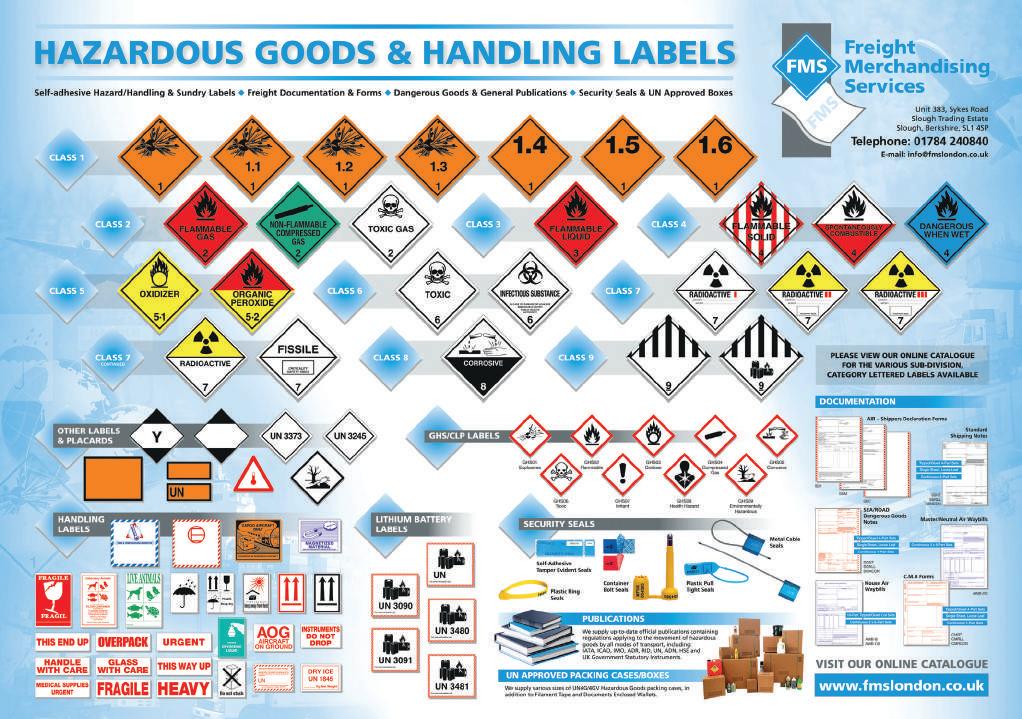
• The revision of §172.204(a)(3)(ii) on electronic certification
This is only a very partial list of the changes and, while none makes a substantive change, users are advised to check the paragraphs of relevance to them in case any amendments will impact their operations. The full text of the rulemaking can be found at www.govinfo. gov/content/pkg/FR-2022-12-27/pdf/202226960.pdf.
REGULATIONS 51
NOT OTHERWISE SPECIFIED
THE MYSTERY GUEST
Containerised trade brings with it lots of advantages, especially in handling goods in ports, but there are also downsides. One of those is the potential for nefarious individuals to use the anonymity provided by the bland box to hide contraband or other material –including people.
So, when a young man was found hiding in an otherwise empty shipping container on its discharge at Port Klang, Malaysia in midJanuary, the authorities suspected he was the victim of people trafficking.
Once he had been fed and cleaned up, the young man gave a different explanation. He and some friends had been playing in the container terminal in Chittagong, Bangladesh. He had gone into an open container to take a nap but, when he woke, he found the doors were locked and the box was being loaded onto a ship. It was only five days later, when the container was discharged and a port worker heard banging from inside, that he was discovered.
Rather appropriately, in these days of the circular economy, once the lad had recovered he was put back on the same ship to be taken back to Bangladesh, hopefully this time travelling in the accommodation block.
IT’S A MAN’S JOB
We recall seeing a fireman speaking at a conference about his job. He put it like this: “When everyone is running away from danger, we’re the people running towards it.” And, yes, being a firefighter is a hazardous job.
However, it emerges from India that even trying to be a firefighter has its hazards. The Mumbai Fire Brigade has been on an intensive recruitment drive to fill 910 open positions and, during a two-week period in January, put
more than 7,500 applicants through physical tests at a training ground in the western suburbs. One of those tests involved jumping off a 19-foot (5.8-metre) wall into a sheet being held by trained firefighters.
It was this test in particular that proved difficult and it was responsible for most of the 147 injuries received by the candidates. Most of those injuries were minor but at least five involved fractures that required hospital treatment. The local authority said that “all safety precautions” had been followed.
STOP THAT TRAIN
Even fully trained firefighters can sometimes fall foul of unexpected occurrences, as crews found out last month in Bavaria, Germany. Crews received an early morning call of a locomotive on fire near the village of Strass; they were heading out to deal with it when the loco started moving – and then moving faster. Presumably the fire had damaged the braking system.
As the blazing loco picked up speed on a downhill gradient, the fire crew hurried along behind it, doing their best Keystone Cops impressions, hoping it would stop before reaching the next town, Freilassing, where the volunteer fire crew was standing by to help. Instead, the loco just swept through the town, trailing flames and smoke (a video is said to be available online).
The situation was brought under control by railway managers, who managed to switch the ‘ghost train’ onto a side track just after Freilassing station, where it ran into buffers and came to a very sudden halt. That was just as well – had it not been stopped there, it would have carried on over the border into Austria.
HCB MONTHLY | FEBRUARY 2023 52 BACK PAGE
ADVERTISERS INDEX Chemical Express 15 Chemical Watch IBC COSTHA 32 CS Leasing 17 Fort Vale 02, 19 Freight Merchandising Services 51 Hoyer 06 Klinge Corp 21 Labeline 41, 43, 45, OBC RAS Ltd 09 Schütz IFC Scivera 35 TWS Tankcontainer-Leasing 17
Comply with confidence
Powerful
Our membership products
Chemical Watch membership helps you stay compliant, develop your team’s skills and keep pace with the latest developments.
Award-winning reporting, comment and analysis to inform your product safety strategy.


Regulatory Database
Comprehensive regulatory coverage at your fingertips. Comply today and plan ahead.
Professional Development
Your complete learning and development solution. With training, conferences, webinars and more.
insight and intelligence to unlock the full value of regulatory compliance in your business.
News & Insight
To find out more, visit: home.chemicalwatch.com/solutions






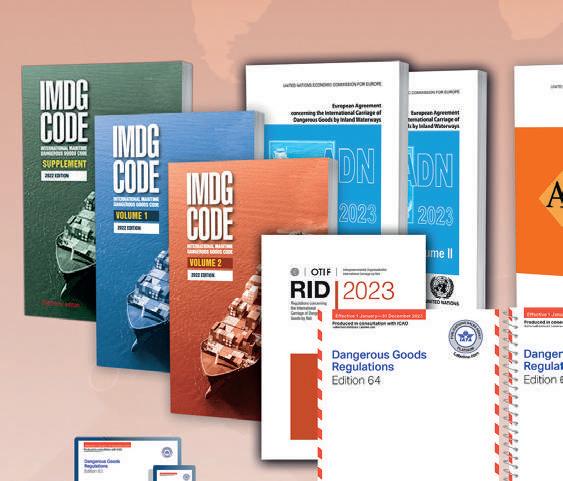


Tel: +44 (0)870 850 50 51 www.labeline.com Email: sales@labeline.com Dangerous Goods Regulations 2023 Don’t forget we also stock digital versions of your 2023 books





















































































































